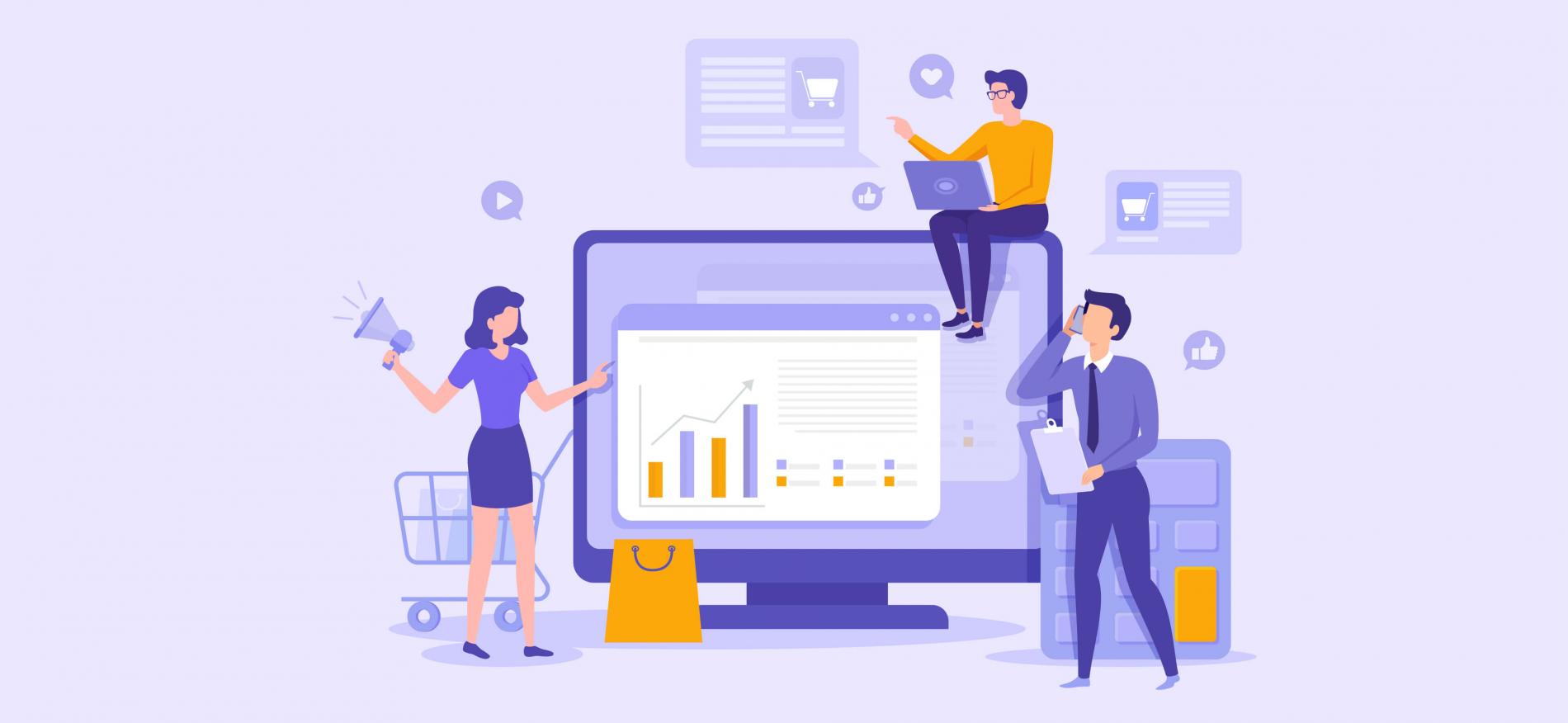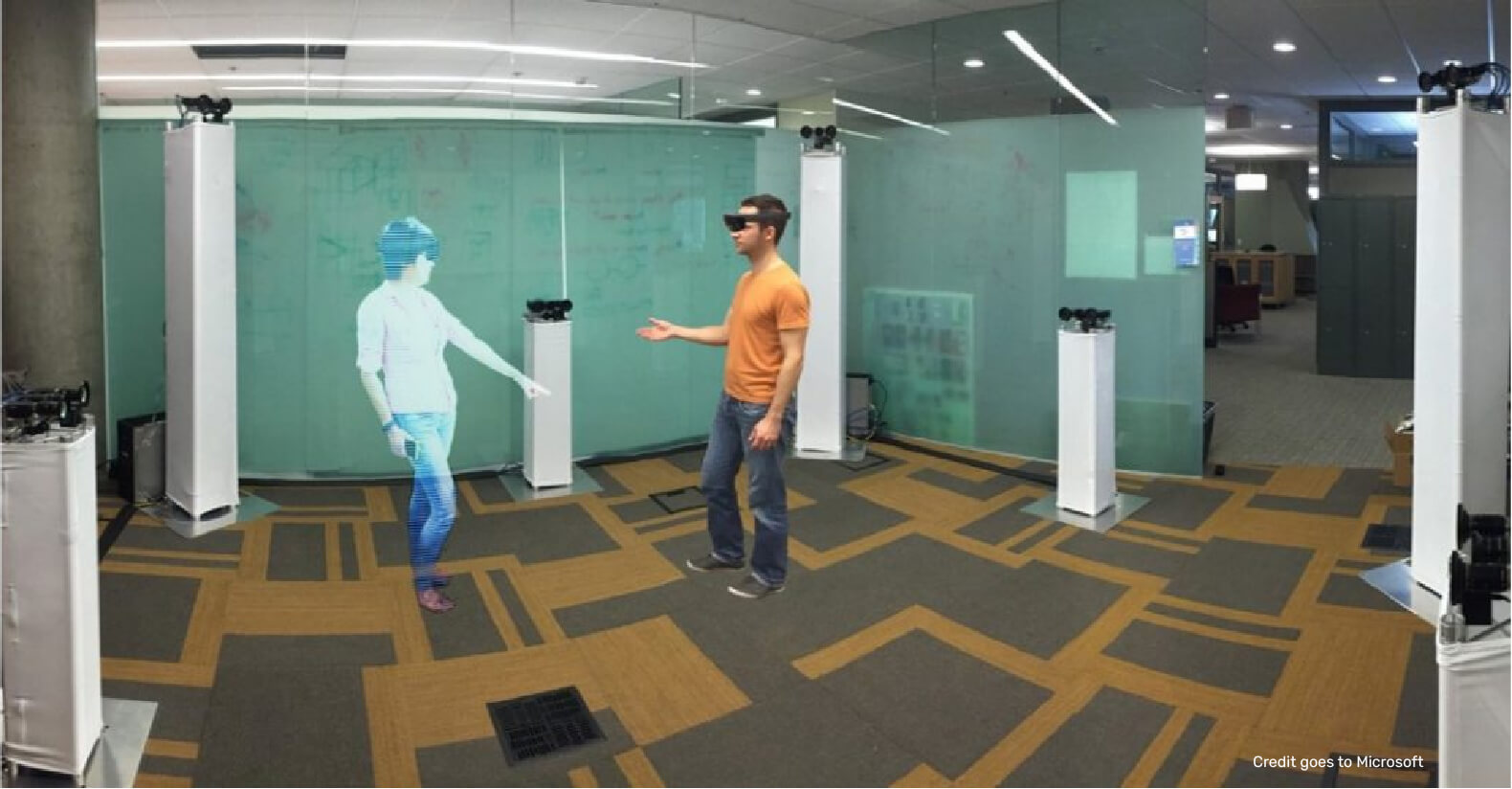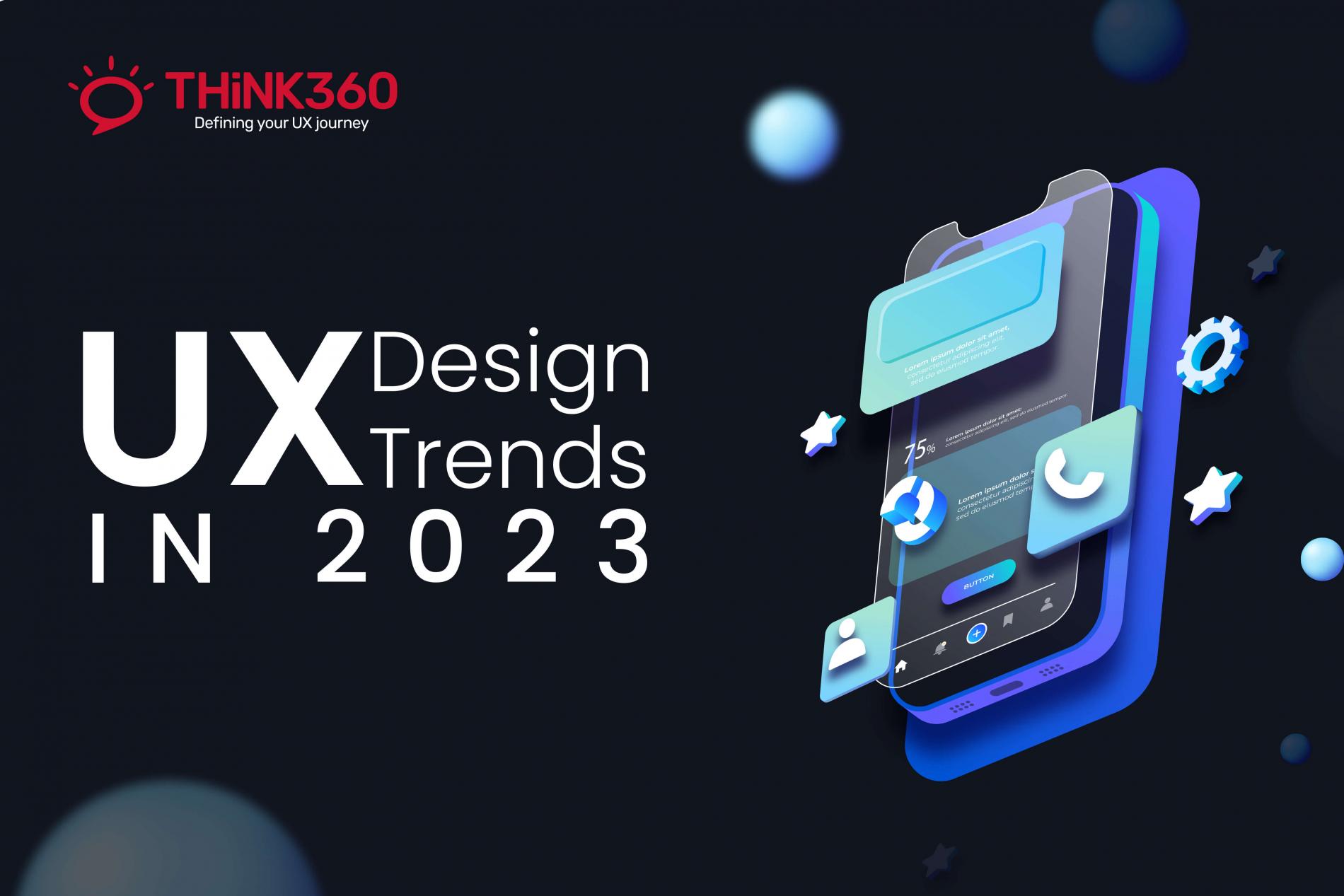
In this article, we will explore 22 top UI/UX trends for 2023, what is influencing the trend change, and why you should check out the new trends.
Table of content -
- Dark Mode
- Neumorphism
- Bold Typography
- Advanced Micro-Interactions
- Remote and Virtual Collaboration
- Great User Onboarding Experience
- Frictionless Authentication
- Personalized Experience
- Rising of Super Apps
- UX Writing and Microcopy
- AR or Augmented Reality
- VR or Virtual Reality
- MR or Mixed Reality
- XR or Extended Reality
- Holoportation
- Metaverse
- Web 3 For Designers/PM: Why Is Everyone Talking About It?
- The Difference between Web 3 & 3.0
- What would be The Next Big Trend in Web Designing?
- Blockchain Technology
- Cryptocurrency
- NFTs or Non-Fungible Tokens
- ICOs or Initial Coin Offerings (ICOs)
- Decentralized Apps (dApps)
- Smart Contracts
- Distributed Computing or Edge Computing
- DAOs: Decentralized Autonomous Organizations
- ML: Machine Learning & AI: Artificial Intelligence
- The Metaverse
- All about Blockchain and its Fundamentals
- AI-Powered UX Engagements
- Why Seamless User Experience is next big thing?
22 Trending UI/UX Designs & Strategies to Rule in The Year 2023
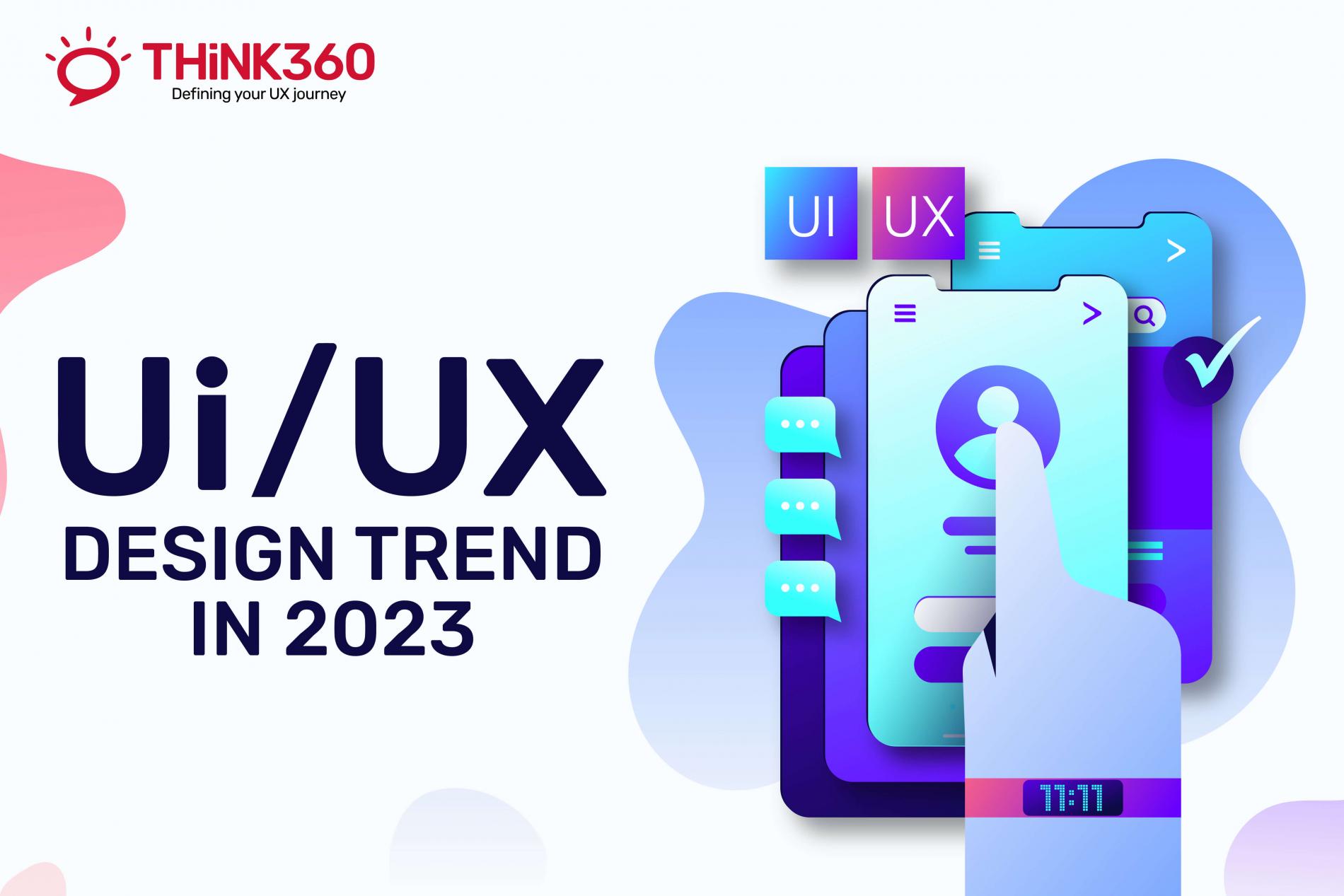
Millions of e-com businesses and websites are blooming every day, hence consumers are getting more options through online portals. UI/UX designs play a key role to engage your audience with your website.
But UI/UX design trends have changed now from their beginning days. It is changed based on the personal taste of the users, pandemics, and evolutions of technologies.
With new standards of personal experience, UX trends and AI have overtaken new standards for users and business owners.
Hence, the online platform that offers the best user attention will score in this conversion game.
As a business entrepreneur, there is a need to follow the latest UI/UX design trends so that you can stand apart from the competitors.
So if you are planning to redesign your online business, make sure you follow top UI/UX trends in 2023.
In this article, we will understand What are current UX designs and the possibilities for upcoming digital trends in 2023.
Let's begin our discussion in detail -
What is UI/UX (an overview), and why it's important for Your Business?
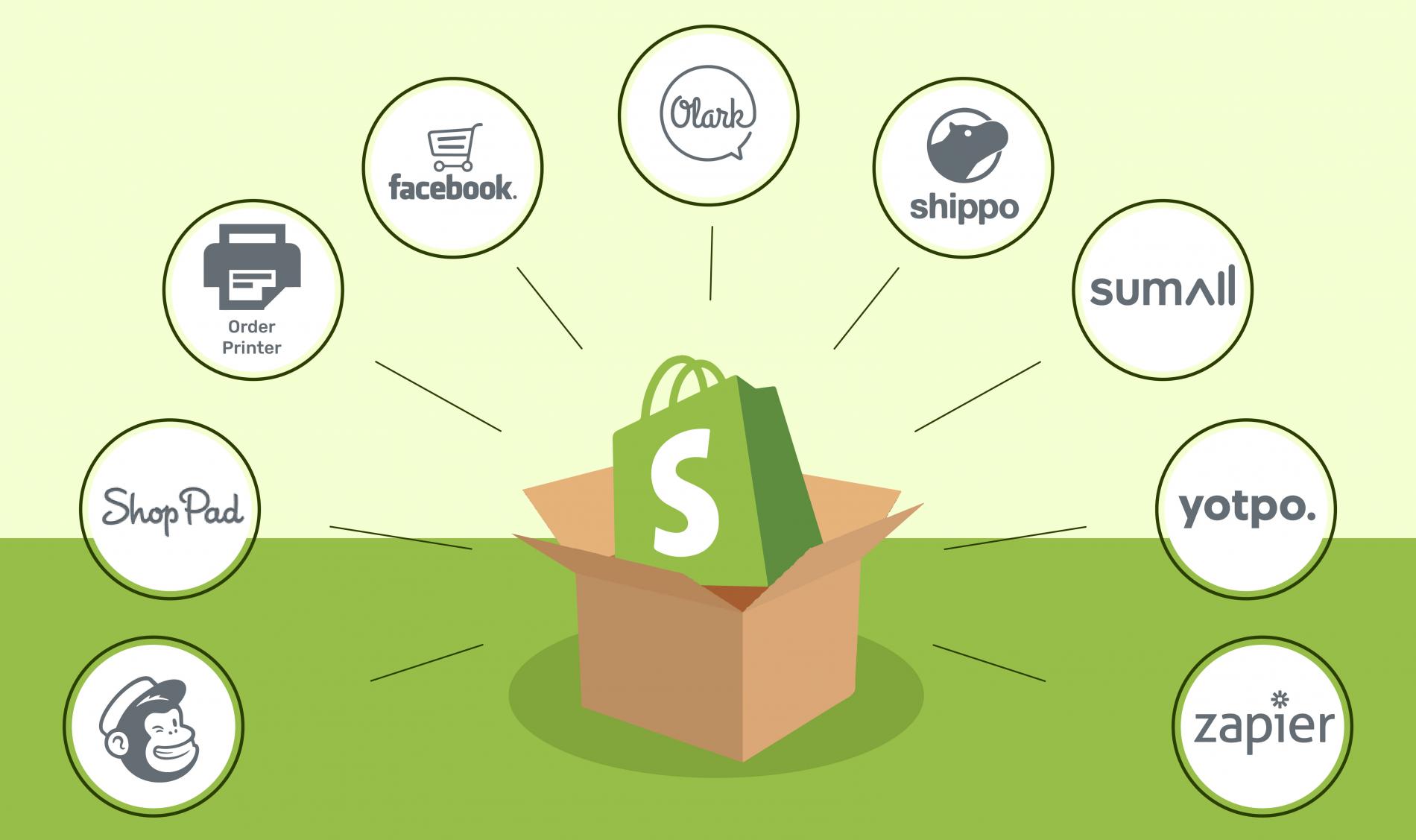
In today's world, "online" is a part of our daily lifestyle. From online information to shopping, food ordering, and now grocery for perishables and staples.
Many research has shown that getting recognized over millions of competitors in the market is hard.
Even if your position is at the top, it is even more difficult to stay in that position.
Every pixel and a second can decide whether your audience will be in or out; Your website appearance and how it is working for a user. Website appearance depends on the UI and UX designs of the brand.
The UI (user interface) & UX (user experience) -These two factors are majorly responsible for data visualization and all-over experience within your brand.
People often get confused about these two words, but both are different. To understand the difference; it is crucial to analyze the needs of users and product/business objectives.
UI & UX design is all about graphics, images, layout, design, content, typography, data visualization, user behavior, user research, micro-interactions, and other features.
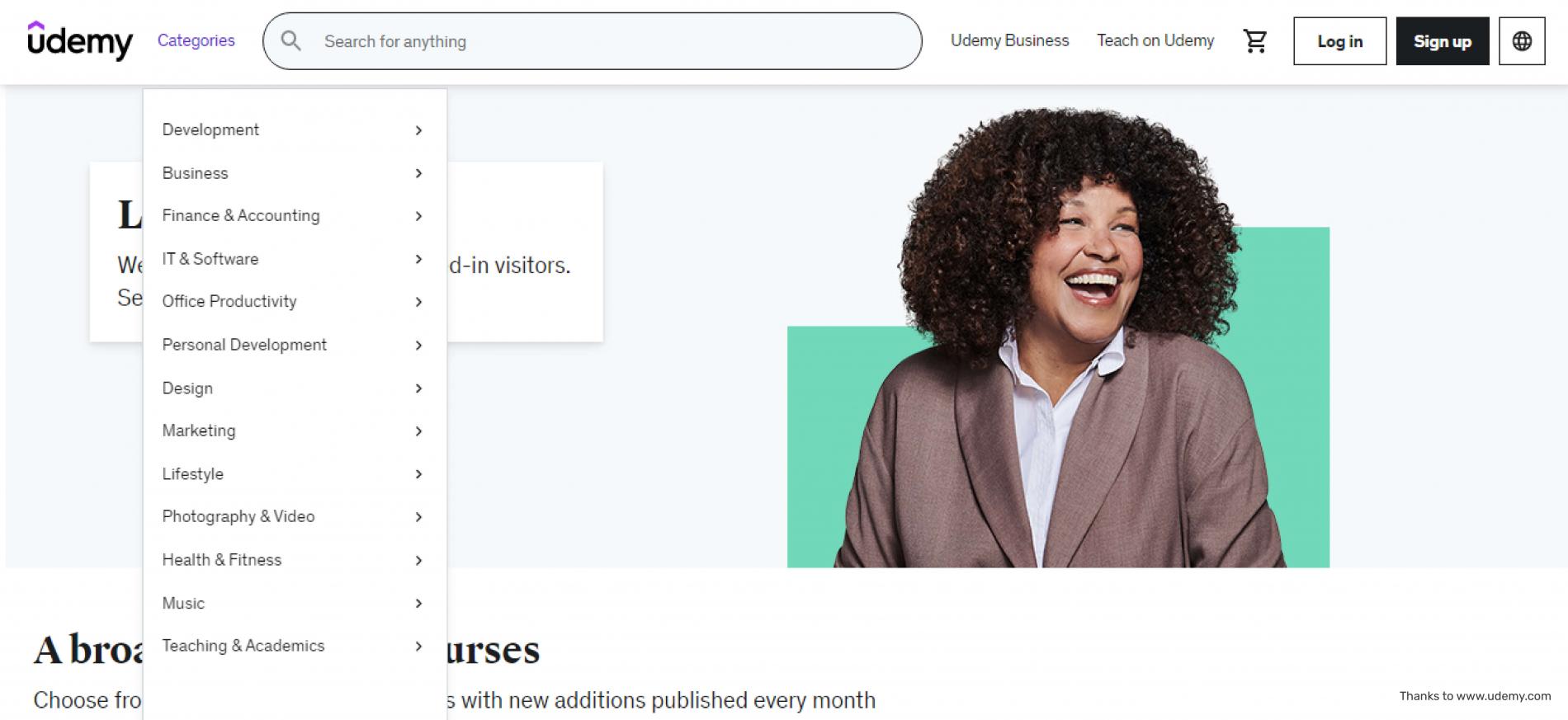
UI always works to make the user-experience great with the product and services. Customization and personalization are highly trendy words in UI/UX design and development world.
When a person comes to your site and looking for something of his interest, a UX designer must be conscious of what the customer expects to see at first; what would he can search for, what he needs from your products, and how he can reach it, etc.
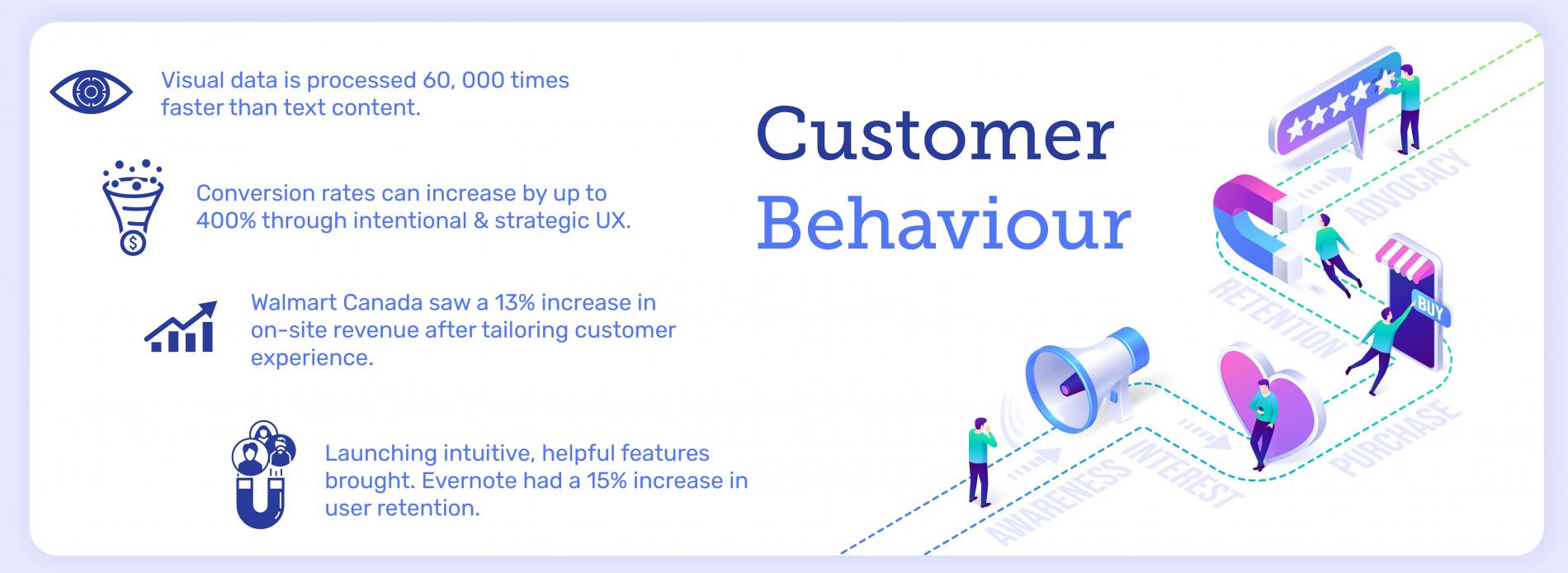
To create a great user interface, UI designers need to be familiar with the functionality and the products appearing on the digital platform. E.g., What users could feel when they look at products on their respective websites or application.
UX designers will try to put themselves into the audience's shoes to find the right way to perform the functionality of the web portal.
If your products have different user personas with different needs, then UX designers are expected to understand users' behavior.
They will try to create a better user interface (UI) to give their users a great user experience (UX) without complicating things.
Importance of UI/UX for Your Business.
It is an innovative industry, and every day is getting more competitive, and the importance of UI/UX design has become very important to building brand value.
The UI/UX designs are customer-centered and always focus on user satisfaction, therefore playing a crucial role in business growth.
A good UI design will help your customers to be more engaged on your site/app, and a hassling or a complicated design can lead your audience away from your online appearance.
Your website, mobile app or software appearance must be well defined and well designed so that users can use it efficiently.
A beautiful presentation (UI) of your product and a pleasant user experience (UX) can make your target audience loyal customer.
Your products' appearance can influence the user's decision of whether to buy your products or not.
Better UI/UX designs convert to business growth and revenue, which is crucial to the reputation of your business.
How UI/UX can Help to Thrive Your Business?
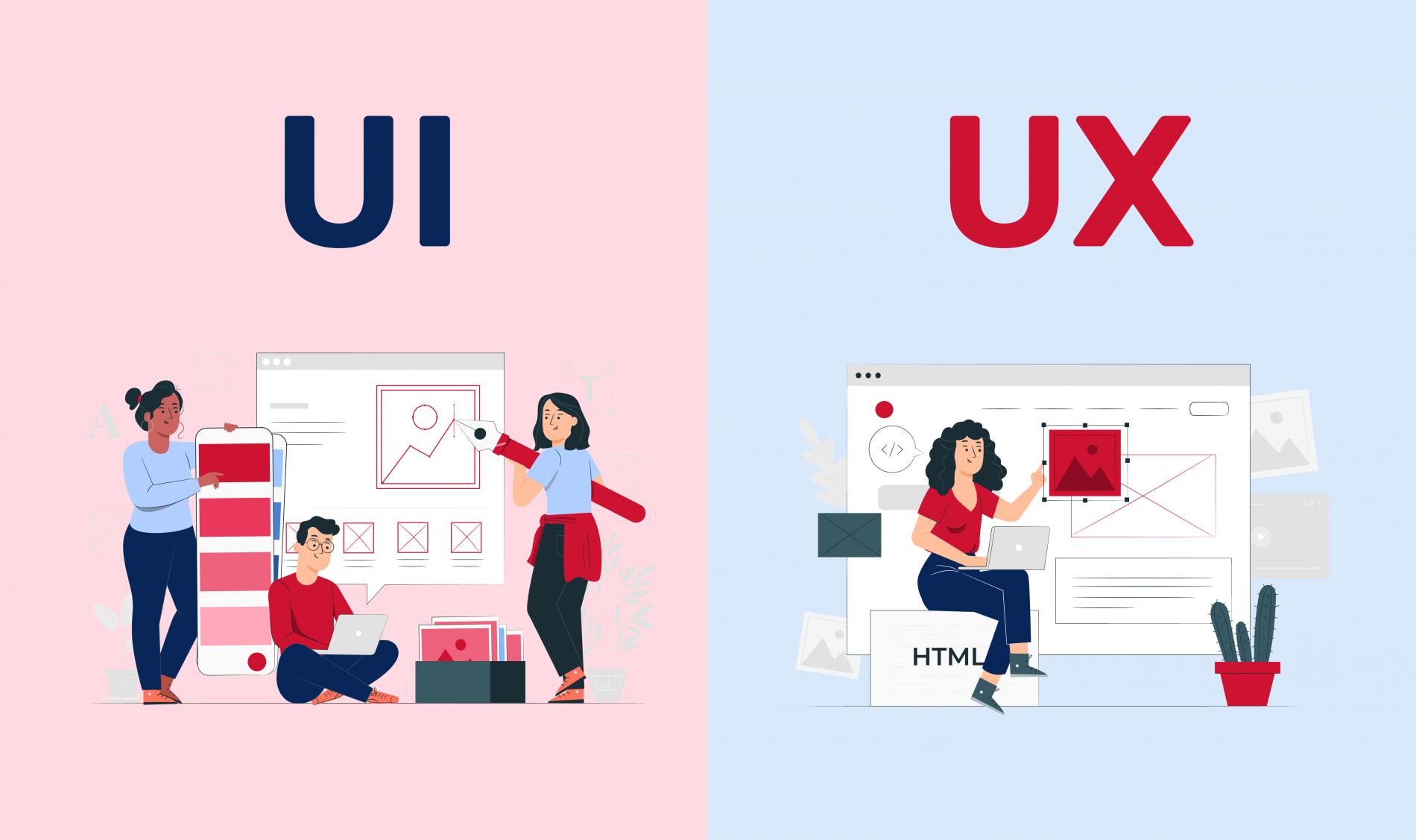
At present, many businesses have diverted their shopping method and transactions digitally.
Every user wants ease of doing for his purchase and payments and a seamless experience with all available devices.
Here, UX plays a vital role, especially for new users.
At the initial stage, a new user always opts for a better appearance of the product he is searching for, UI plays a vital role for a business owner.
A good UI & UX helps to get all attention of a user and helps to keep him stay on your website.
When we talk about UI & UX, it always refers to the use of digital media such as websites, software, application, blogs, and e-commerce.
When a person is using a product or visiting your online portal, you have only a few seconds to make a connection, here a relevant user interface can influence him to spend more time on your site so that he can decide to avail of your services and spend his money on your products.
Difference between UI and UX
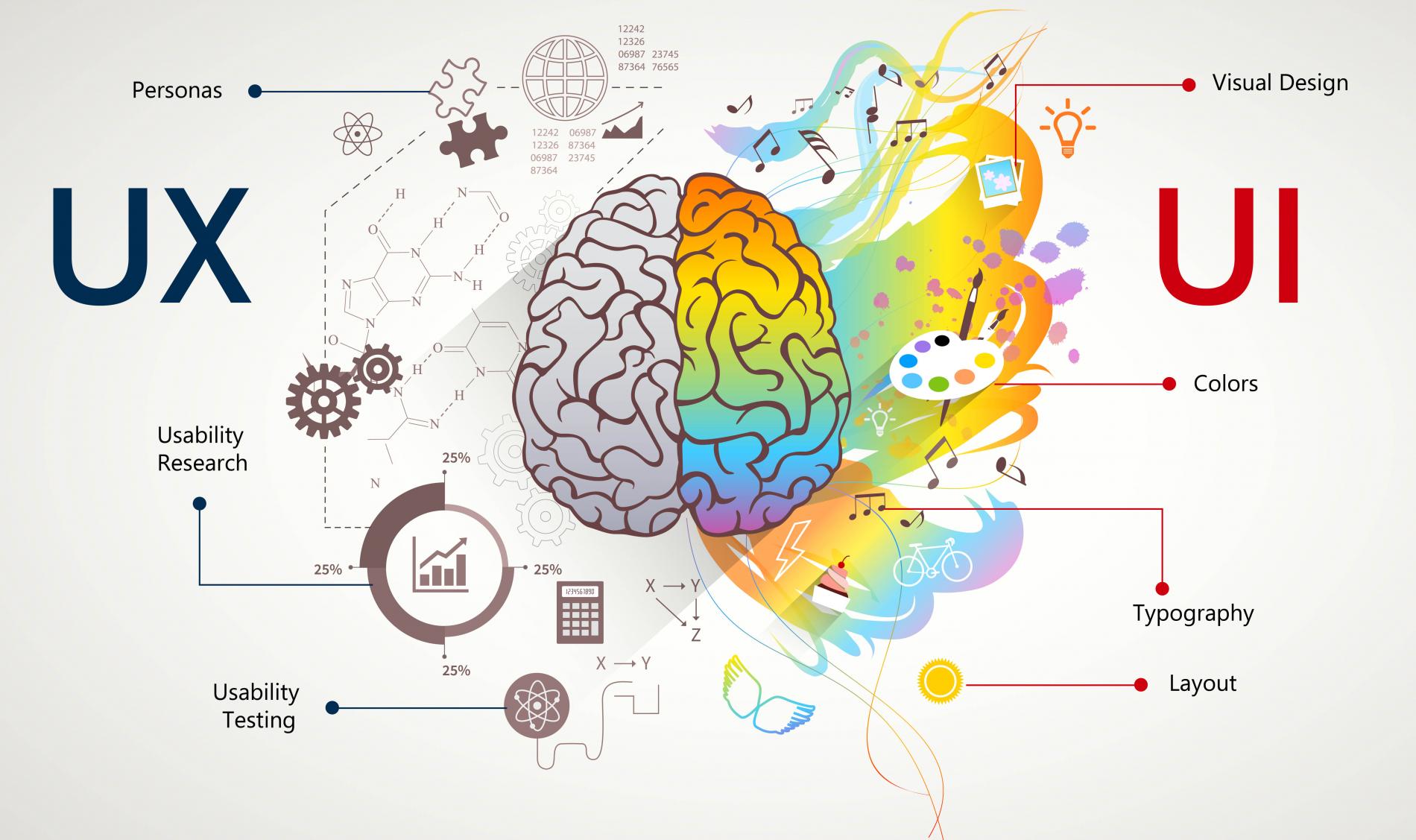
UI refers to all visual elements in digital media such as screens, Icons, toggles, buttons, and other visual things.
Conversely, UX can refer to how you interact with your customer from a digital medium.
UX can be described as total experience from first contact to the last message, and UI is all about visual touchpoints of a user to interact with a product.
In technical terms, the user interface or UI works between humans and computers for communication and interaction via screen, layout, and action buttons.
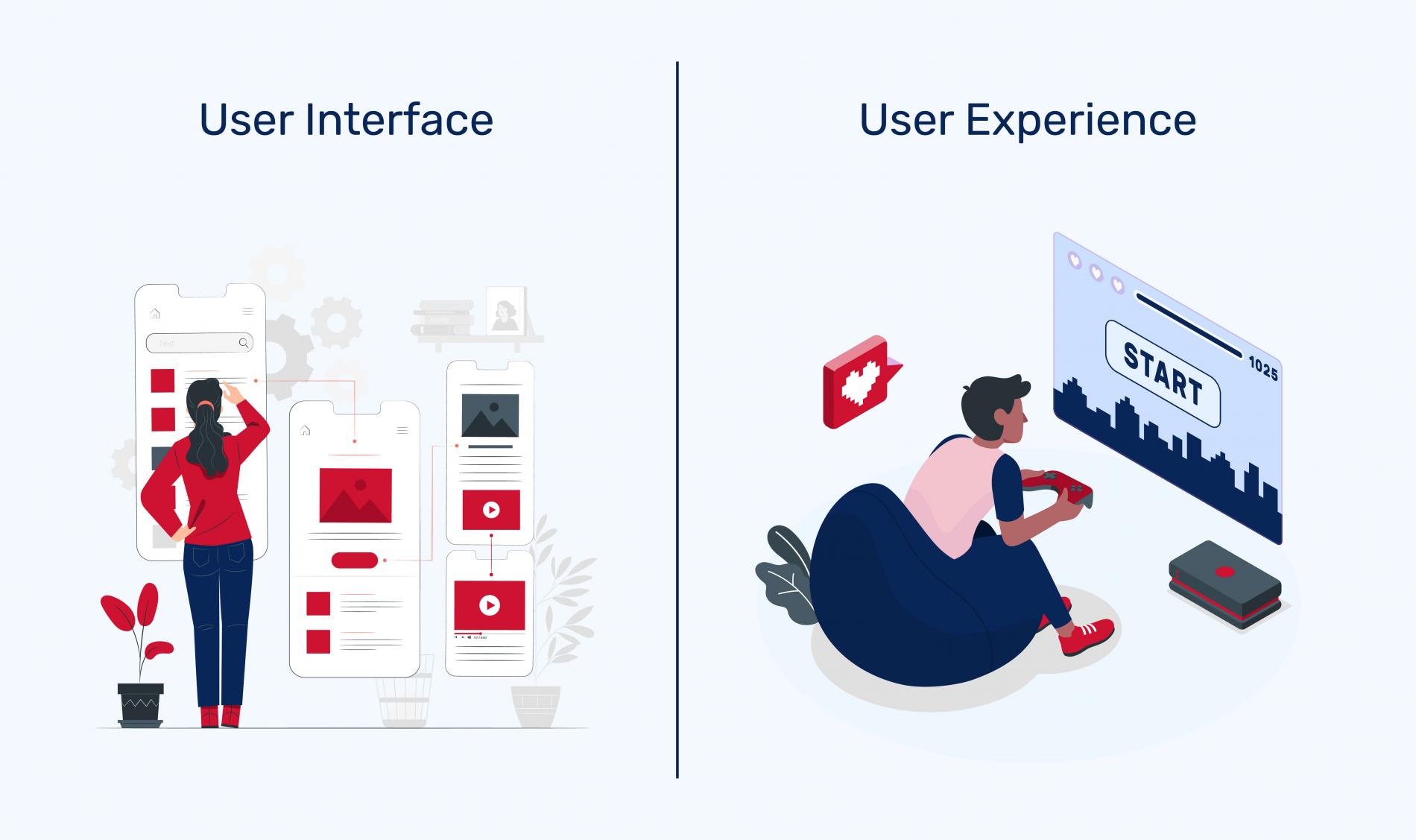
UI is directly proportional to UX; the more UI is convenient and appealing - the more efficient UX will be. UX or user experience encompasses the end-users experience and interaction with the website or the application.
UX always aims to give an efficient solution to the end-user seamlessly.
For example, Framing and foundation of a home (UX) come first; establishing how each room connects to and relates to the next, selecting the functional space for the doors, finding the most suitable place to build the stairs, and so on.
Once the foundation is complete, you can think about interior design (UI). Such as choosing a style of furniture that suits the color of the wall, hanging pictures attractively, and arranging kitchen utensils within your reach, so the room doesn't look messy.
This example gives you a rough analogy of dividing the design responsibilities between the UX and UI designers working on the product.
First, the logical flow and fundamental parts will determine, and then visual details will define. It also gives you an idea of how collaboration works, when UX designers hand over their work and recommendations to the UI team when the core concepts are tried and tested.
Effects and Impact of UI/UX on the Website or App.
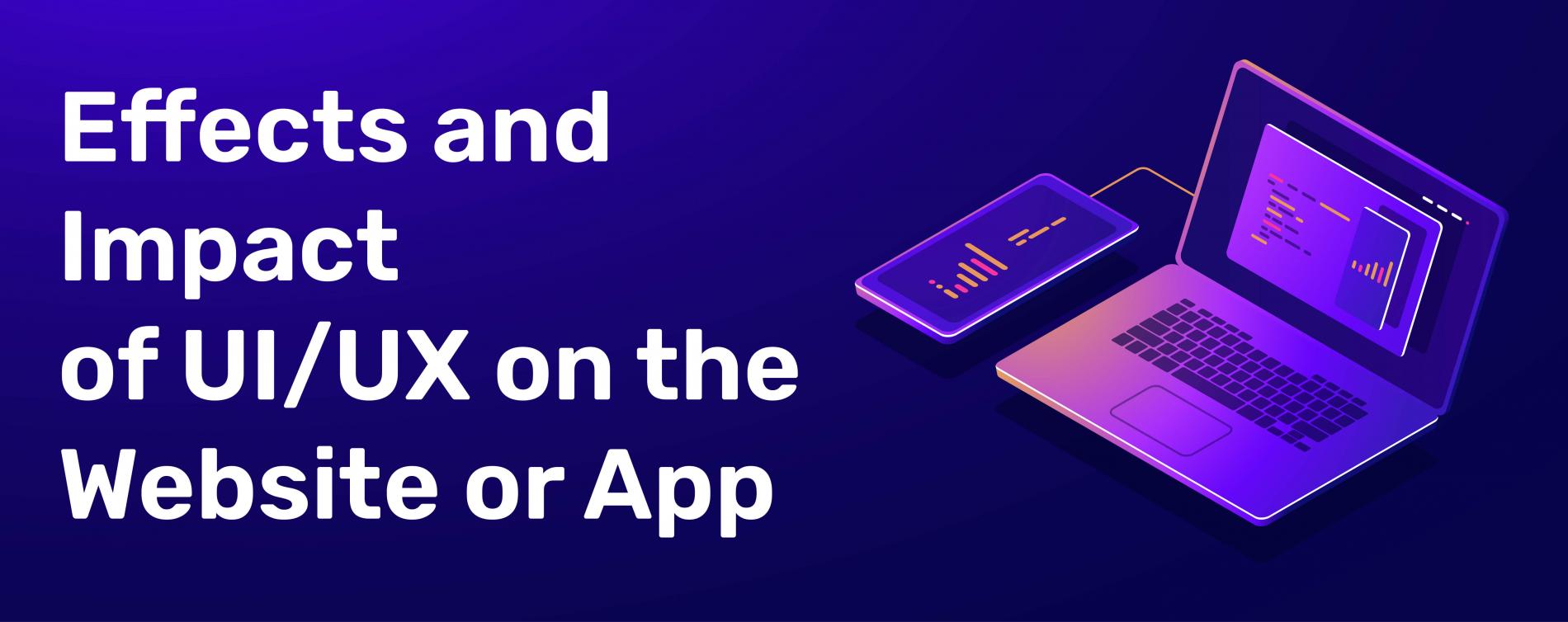
Having an online business and keeping it up to the mark is important.
Many online companies fail even if their products are better just because of a bad interface and inappropriate typography used in UI.
It directly tends to the annoying UX, and your user will stay away from your website or app.
A bad user interface can be a bad layout, wrong product name, irrelevant menu buttons, and annoying ads & notifications.
Such things will assure in marking your customer away from your services. This time the advancement of UI/UX designs has set a big competition in the mobile app business.
You need to update your business with the current market requirements to make your business stand out from the ordinary, attract competitive app users, and win millions of downloads.
Here we will discuss some key factors for UX & UI designing and their impacts on your online business.
- The number of mobile and web applications is continuously increasing. There were around 180 billion app downloads in 2019, 195 billion app downloads in 2020, and about 200 billion app downloads in 2021. This will keep growing with upcoming years and the latest technologies.
- People in the age group 18-24 years spend more than 65% of their time on various mobile apps. And approximately 90% of smartphone users spend their time on mobile apps.
- 45% of people spend their time on social media and music apps, while 42% of consumers prefer mobile apps to meet their shopping and communication needs.
- Many people are regularly paying for mobile apps either on a monthly or yearly basis. There are more than 25 common apps on every user’s smartphone.
- Research shows that it has around an ROI of 9,900%. On average each $1 invested in UX brings $100 in return.
- The top companies leading the way in user experience outperform the S&P Index by more than 35%.
- If you utilize UX design to boost your customer retention by as little as 5%, you could get rewarded with at least a 25% profit increase.
- Companies with lower UX (“design-centric”) still have their sales increase by 60%.
- In 2016, A design study of 408 different companies found that the more a company invests and focuses on design, the more sales it generates.
- The ROI on UX investments is 9,900%. (UXCam)
- 23% of customers with a positive experience told 10 or more people about it.
(Credit: www.intechnic.com)
By these factors, we can say mobile and web apps are ruling the online world and UX designs will keep influencing and impacting the behavior of their users.
What are Current Trends for UI & UX?
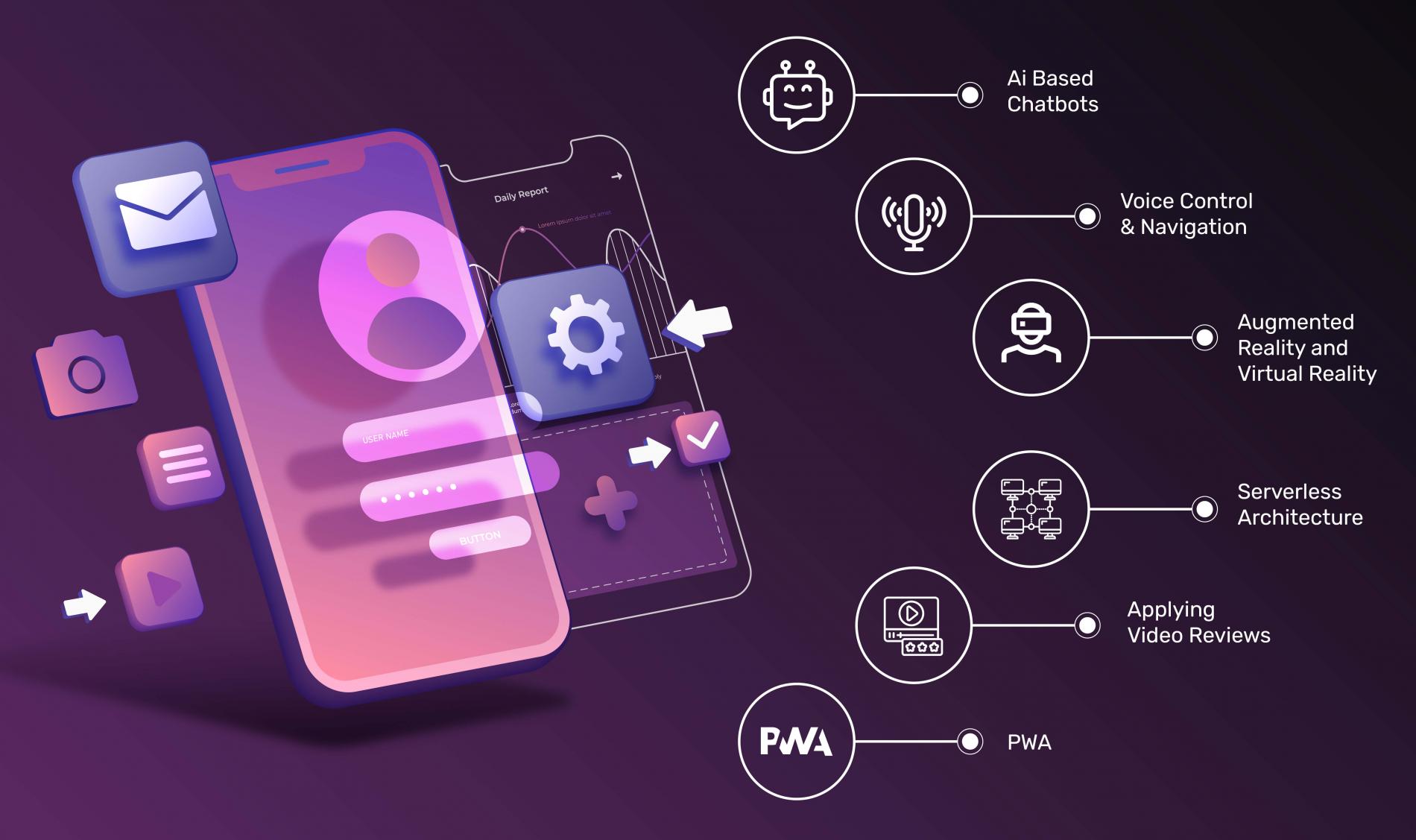
When the world was dealing with pandemic 2020, the scenario for product design was changing.
In the web designing and software world; lockdown, and forced closure of businesses, companies, and stores have had an enormous impact.
With this dramatic change in the world, work from home, online shopping, remote collaboration, doorstep services, and remote communications platforms saw rapid growth.
Earlier, both marketing and user experience were considered different streams of design.
But later in 2021, people understood the impact of the UI/UX design trends on people's mindsets. The impact of digital media is possible beyond one's imagination; regular updates are happening in the UI/UX design field.
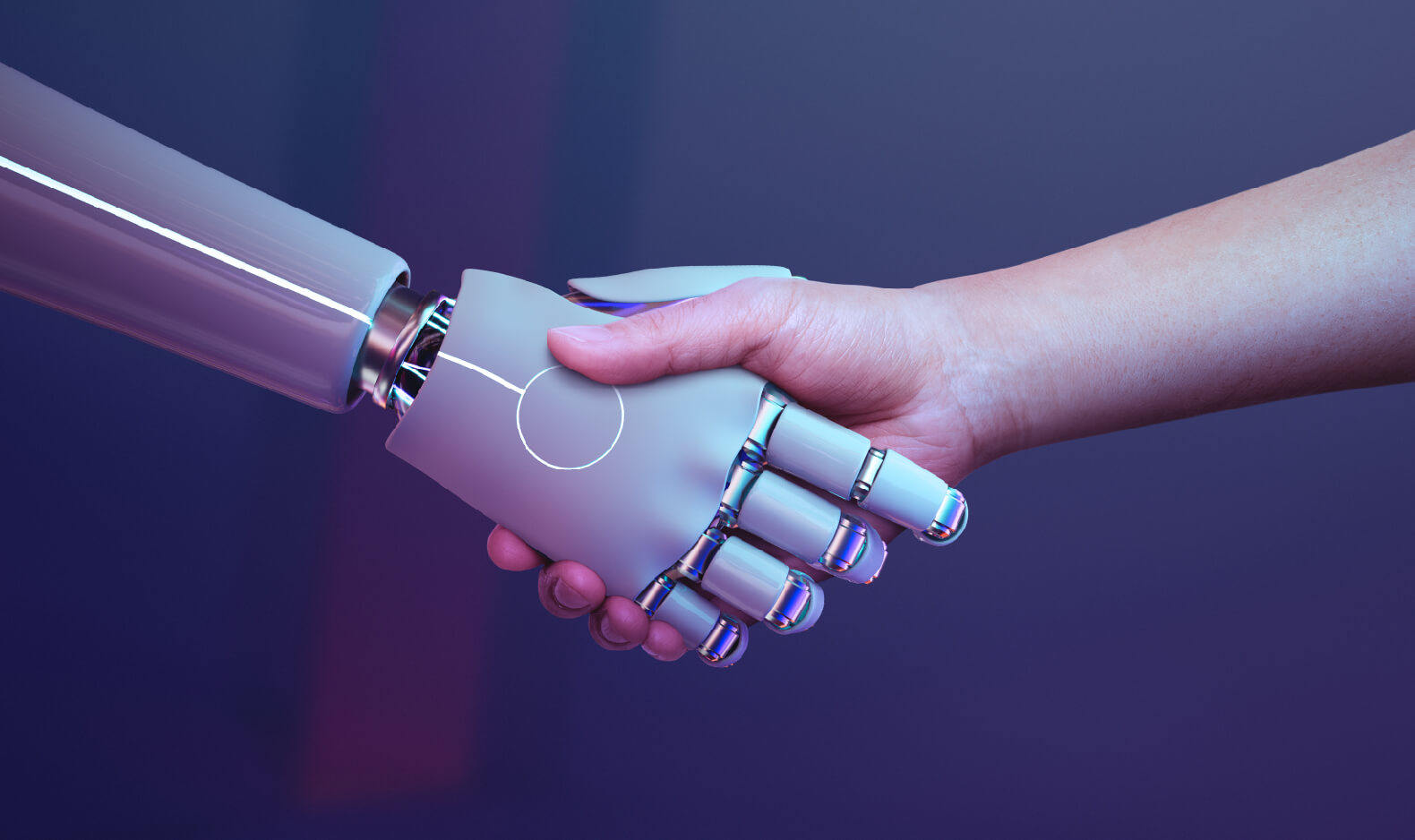
Since technology and design trends always reflect the customer’s needs.
Current Trending UI & UX Designs are - Dark mode, metamorphism, bold typography, advanced micro-interaction, remote & virtual collaboration, convenient user onboarding experience, frictionless authentication, personalized experience with shopping, raising of super-apps, UX writing & microcopies, Augmented & Virtual Reality and many more.
In the upcoming year 2023, the UI/UX trends will prioritize simple page designs, speed, a mobile-first approach, and of course artificial intelligence.
Let's understand more about the current trends in UI/UX designs and Trends to follow in 2023.
#1 Dark Mode
The dark mode is now coming to mobile phones, laptops, websites, and even individual apps.
Using this feature has many noticeable benefits such as; you can use it in bed or at the cinema without disturbing your partner or other people.
The idea behind Dark Mode is to reduce the light emission from the device screen while maintaining the minimum color contrast ratio for better readability.
- Less ‘blue light’ emission from your phone can keep you awake if you use your phone before sleeping.
- It uses less energy on your phone so the battery will last longer.
- Helps potentially reduce eye strain and dry eyes in low-light conditions.
- Some experts believe that dark mode can help people with light sensitivity or visual impairment.
With many advantages like- saving battery with OLED/AMOLED screen, better readability with a dark background helps to reduce eyes strain, minimize the blue rays; it will be continued in the year 2023 too.
#2 UX Analytics
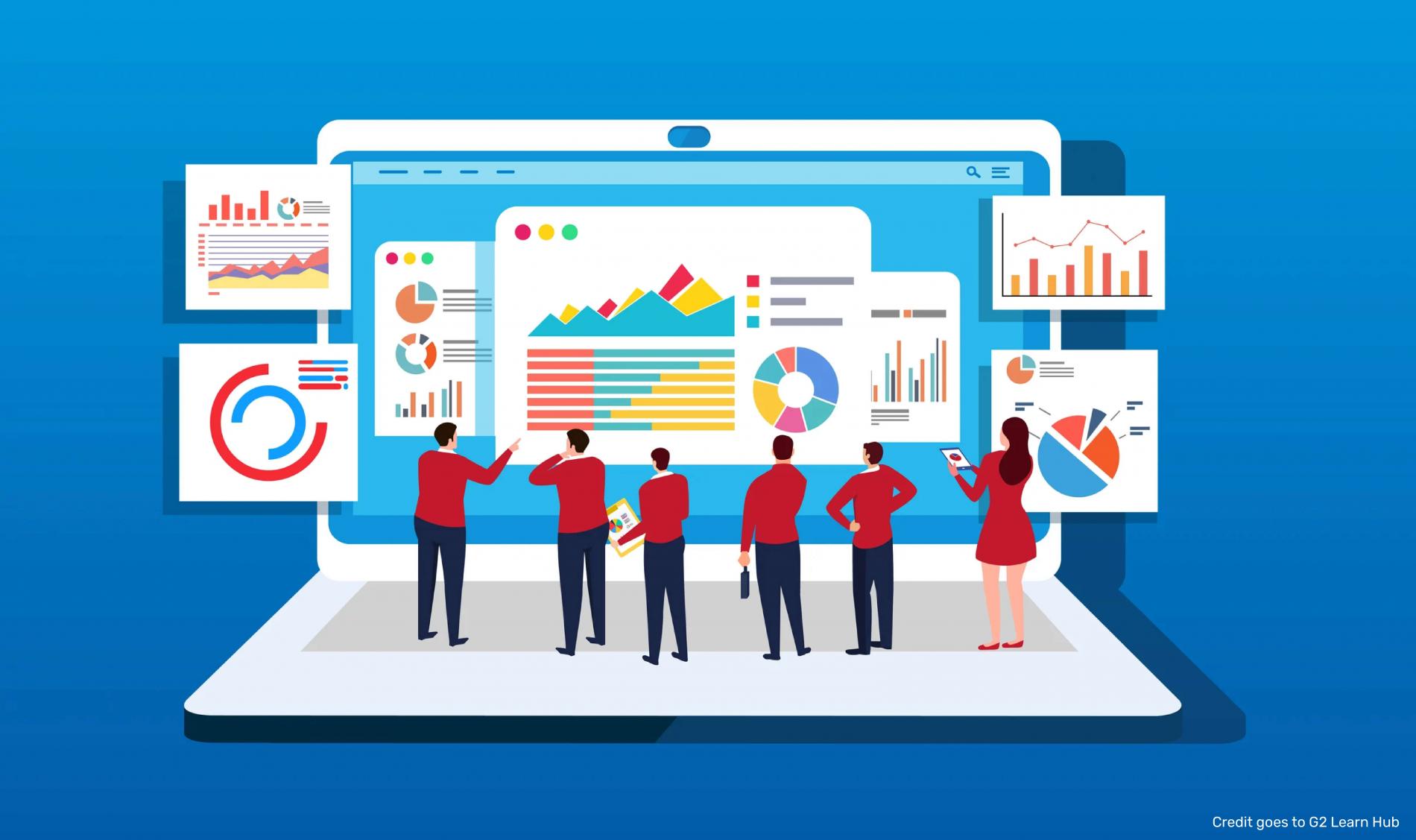
UX Analytics is the measurement and analysis of user activity on a web portal that provides insight into how its design can be adapted to meet customer needs.
Measurement can be quantitative and qualitative. Quantitative data measures what a user does, while qualitative data measures why they do it. Both types of data are important for carrying out effective UX analysis.
What are the benefits of UX analytics?
UX Analytics allows you to test, validate and develop design intuition through data. If your intuition tells you that users are not clicking on a particular button because of its color, you can test (A/B testing) that intuition by taking advantage of UX analytics.
Let's take some other examples (according to Sitepoint) of how UX analytics supports data-backed design intuition:
- Find out from where users are leaving and why
- Optimize the user journey to decrease exit rates
- Re-think visual design to improve usability and accessibility
- Check where and why a user is “rage-clicking”
- Boost conversions and maximize sales
- Rearrange and customize content to fit the user’s intentions
What are some UX analytics tools?
There are so many tools out there to enable you to conduct UX analyses. What you use will depend on your needs, goals, and the size and scope of your business. Using a bunch of mix of tools can give you a more understanding of user journeys. Some tools like Mixpanel- allow integration with other UX tools so that data can easily be stored and analyzed on a single platform.
Different types of UX analytics tools and the data they provide:
- Website usage analytics platforms, provide tools to understand user behavior on your website. These platforms will often come with a set of various tools to help you paint a data-informed, vivid picture of user behavior.
- User flow maps provide visual data that represents user journeys, so you can easily see the paths that users take toward an event, such as making a purchase.
- Funnel analytics (such as google analytics), show you conversion rates at different points of the user journey so you can easily see where users might be dropping out.
- Heatmap analytics tools offer you to visualize data at a glance on which parts of a page are getting the most interaction. a highlighted color-coded ‘heat’ gradient on web pages to indicate click activity.
- Real-time analytics tools provide analysis, of how users are interacting with your site in real-time. These tools can tell you how many users are currently viewing a page.
Session recording tools allow you to go back and watch individual user sessions to gain more insights into their behavior.
#3 Neumorphism
It includes background, colors, shapes, shadows, and UI elements' graphic intensity.
Neumorphism works with skeuomorphism and material design by implementing a minimalist approach while giving a dash of 3-D in the form of buttons and other elements.
Skeuomorphism had a huge impact in the early days of computing because it made interfaces more familiar and intuitive for users.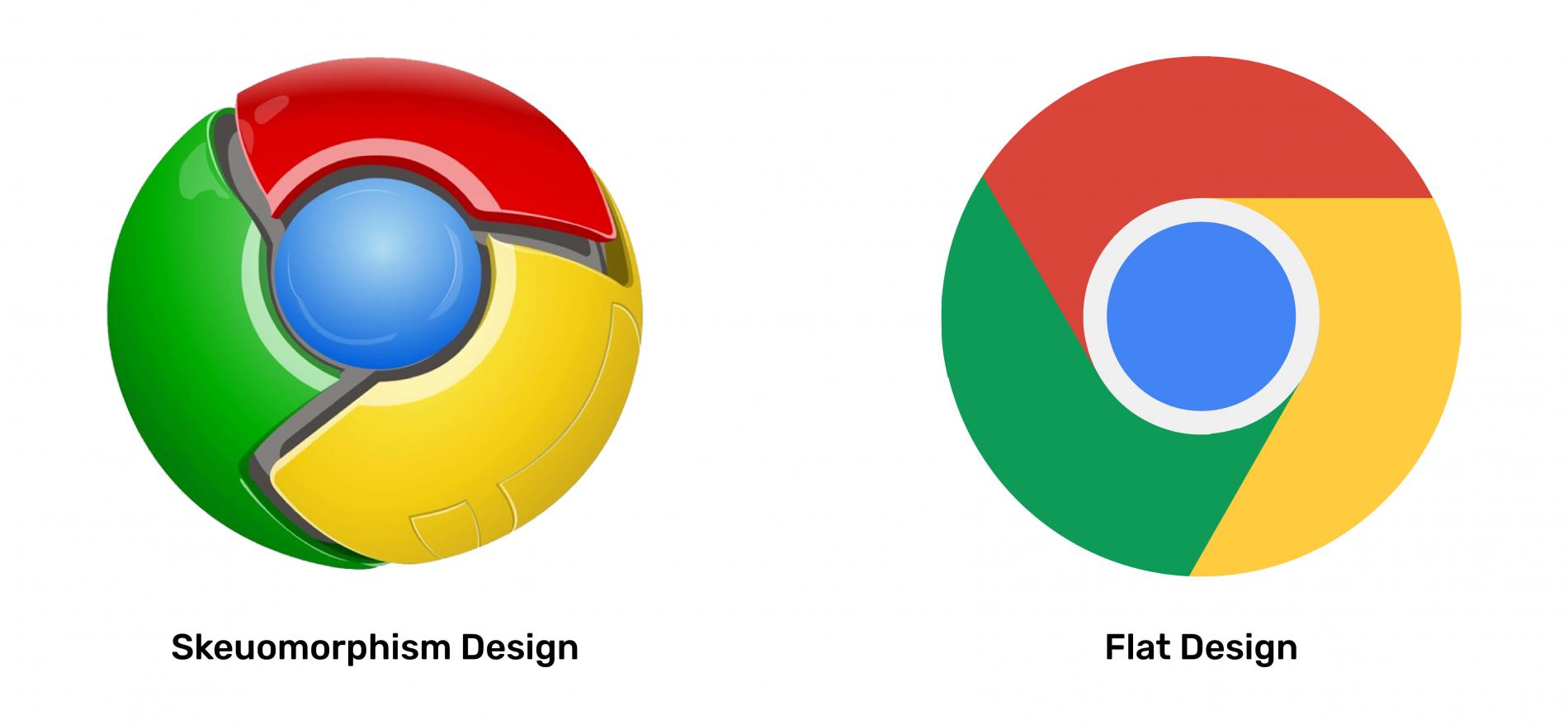
Skeuomorphism is a term used to define an interface that mimics real-world items and serves as a bridge between the real and the digital world.
Two common examples are the RECYCLE BIN icon (on your computer screen) and the DIAL icon (on your smartphone).
Both represent real-world objects users are already familiar with: a trash can and a landline phone.
Neomorphic elements sit just above the background surface and are usually a raised shape made of the same material as the background.
The element's color is either the same or gracefully different from the background surface.
#4 Bold Typography
In the past two years, we noticed that typography in UI is getting large and bold. They are widely used in headings, subheadings, page numbers, and keywords.
A few years back, bold fonts are used to establish priority, emphasis, and convey relative ranking information.
But now, bold and bigger fonts can help writers and designers to establish a typographic hierarchy, Bold fonts act as useful, and visual punctuation needs of being used with some moderation.
Excessive use of bold text can be bad or even worse. Choosing the right font can take your projects to the next level and attract more audiences.
Some best typography tools for UX designers are Marvel, Fonts Ninja, Font Self, Framer, Porto.io., etc.
#5 Advanced Micro-Interactions
Micro-interaction can be understood as how we interact with a product in different applications, i.e., Like, share, retweet, and so on.
Micro-interaction can be understood as how we interact with a product in different applications, i.e., Like, share, retweet, and so on.
Micro-interaction designs are built with the objectives of better UX, features that are a core part of the user experience can help to understand customer needs.
Advanced micro-interactions can be defined as touchless gestures, hands-free air gesture control, and VUI (Voice user interface).
Touchless technology is a branch of gesture control that allows users to control smart devices without using physical input.
Modern no-touch technologies can help to keep people safe within any workplace environment.
With the use of voice and gesture-control features, we can switch from shared to personal devices, for example, Google Assistant and Alexa.
We all are using these features at present and will see more advanced micro-interaction in 2023 as well.
#6 Remote and Virtual Collaboration
During the pandemic COVID-19, the demand for remote and virtual services has skyrocketed.
Every small business to big MNCs has adopted this culture so fast.
With the help of this technology, many opportunities have been raised for collaborators to work together from remote spaces.
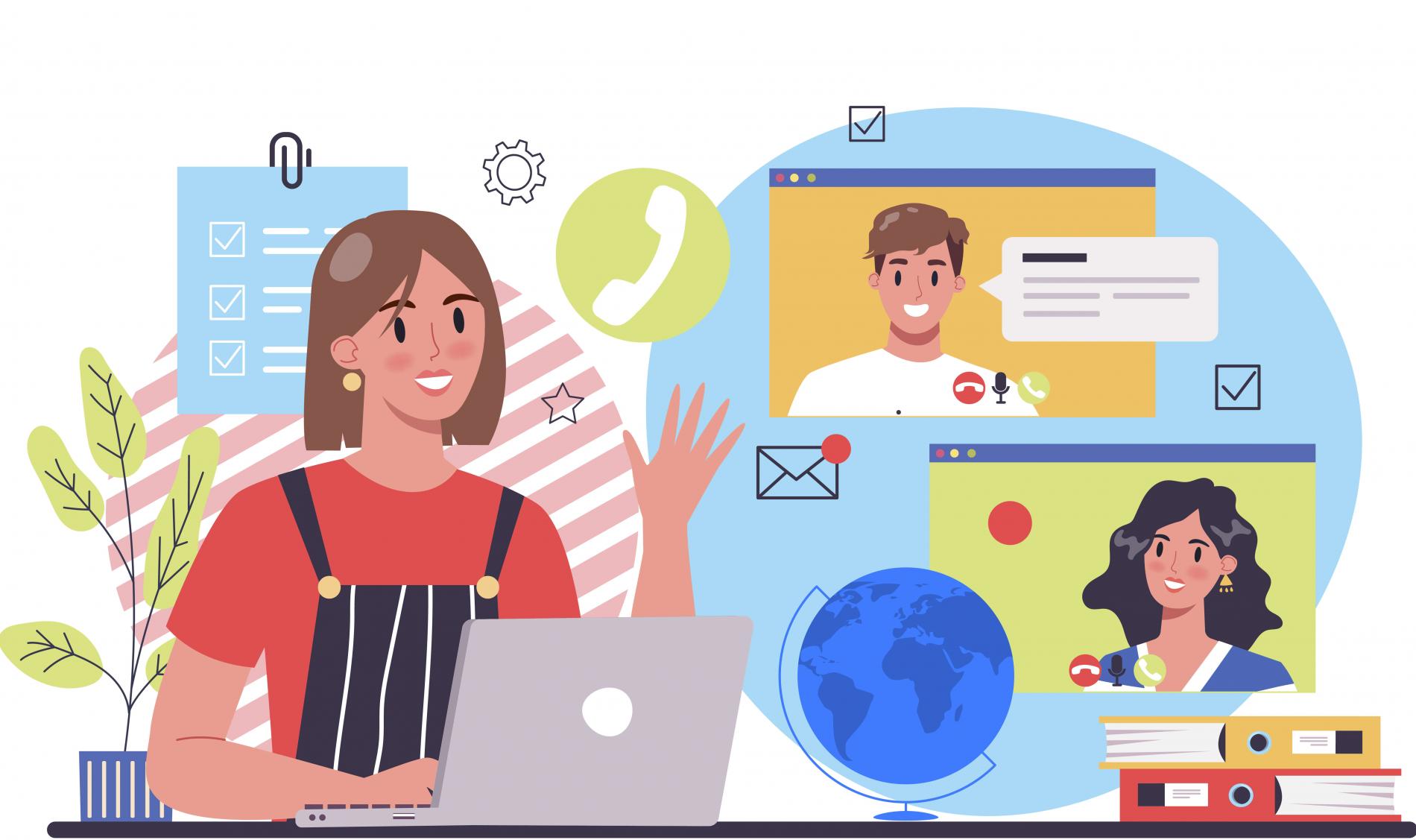
Using virtual collaboration tools effectively can help people stay connected, allow them to work from remote locations, and successfully incorporate technology into their work processes.
With remote collaboration tools, people can share information and ideas online or when they are not physically present in a room.
Some common ways to use remote and virtual collaboration are; Videoconferencing, instant messaging, emailing, screen sharing, and online collaboration portals.
Learning more about virtual collaboration tools and their advantages can help you use them more effectively. Virtual collaboration and remote work services are revamped and will continue in 2023 and the future.
Several best tools for virtual collaboration are- GoToMeeting, Flowdock, Slack, WebEx, Asana, Dapulse, Redbooth, etc.
#7 Great User Onboarding Experience:
During the pandemic lockdown, when millions of people were forced to deal with remote work services, software installation, and using video conferencing, the power of great onboarding increased with the demand.
The user onboarding process has an important step toward their journey with your brand.
A great onboarding process can set the tone of their whole relationship with your services.
This process has a significant impact on a customer, whether he will continue with your services or churn after a short period.
Smooth onboarding will set your customer up for the next step but a puzzling process would leave them questioning why they signed up in the first step.
The customer onboarding process new users go through to sign up and start using the app or product.
It also covers the entire journey: from initial sign-up to product activation and the first use.
Easy onboarding = Happy Customer.
The purpose of customer onboarding is to deliver value to your customer as quickly as possible on their first use asap(if possible).
#8 Frictionless Authentication:
Since we are so fond of password authentication, not only they are unsafe but also a source of friction within the authentication process.
Every user has to stop -> enter a password (if remembered), and then possibly perform other actions (entering the OTP or clicking a push notification) to get the access.
It's not a user-friendly experience.
A frictionless authentication can be described as a seamless experience for user authentication.
It usually involves removing the manual password process, and other methods include progressive profiling and social login.
The frictionless authentication process flow allows the user to perform transactions seamlessly without the need for additional authentication challenges.
Steps for a standard 3-D secure or frictionless authentication transaction process:
- The merchant sends an authentication request along with transaction and device data.
- The 3-D Secure Protocol determines whether a transaction requires a challenge based on the issuer's risk review.
- If the transaction is deemed to be high risk, the issuer may request additional authentication steps.
- On the other hand, if the transaction seems less risky, a frictionless process will be confirmed.
- Once the transaction is authenticated, the approval message is sent to the merchant and the transaction can be processed as normal.
In the year 2021, we saw a great feature for a convenient login process; Frictionless authentication via biometric login for different websites and apps.
Now we can log in with single-click authentication for many different portals.
#9 Personalized Experience:
Customization was a long-awaited demand from the user.
But when you encourage your customers to customize, the burden will shift on the user and most people don't like to refine the settings manually.
Personalization is a step forward to customization, done by machine learning or automatically.
Personalization has become an integral part of the UI design system due to the ability to build a strong connection with the user.
The purpose of this personalization attribute is to provide a context experience by delivering the functionality that aligns with the interest of a specific user without any particular efforts.
For effective personalization, it is important to know your audience.
If you have a fair idea about your services and the targetted audience you can personalize effectively.
After you have identified your audience, you need to set a goal for what you are trying to personalize your UX.
Your possible goal could be as- to increase sales, increase leads, enhance the brand value, or retain customers.
Once you have set the goal, then you would need to identify the list and elements of the brand that need to be changed; based on users' behavior.
The best example of a personalized recommendation is -
While shopping on the Amazon app, we add an item to the cart. Some relevant/similar products also appear on the same page, so that we can have a good idea about compatible products with it.
This automated process is called a personalized recommendation.
Last year, personalized recommendations and quick solutions for what "I like and what I don't"; machine learning and AI are used for a seamless, user-friendly, and personalized experience. It will be more popular and realistic in the future.
#10 Rising of Super Apps
Ever heard about "SUPER APPS" or maybe not?
But we all are using and pretty much familiar with its usability.
So what exactly are super apps, and how are they changing the digital world?
Super apps provide multiple services that embrace many aspects of commercial and personal life and perform in real-time. In simple words - Super apps serve as a single portal to a list of products and services.
Some examples of super-app features are- booking a ride in minutes, chatting with the driver/delivery person, and payments from banks and wallets.
Super apps are a combination of two different sectors into a single app.
For example, a shopping marketplace (Amazon) is connected to another service provider (Uber), and we can access the services of Uber (for booking a ride) from Amazon, and while using Uber, we can use Amazon (to make the payment).
Due to their versatility, super apps have become ingrained into users' daily routines; it's common to have movie tickets from payment apps or book a ride from shopping apps while having a seamless experience with payment from our bank account.
Consumers aren't generally asking for Super Apps, but they certainly want the simplicity and convenience that Super Apps can provide.
Instead of having multiple apps for food-ordering, ride-booking, and payment methods, they want just one app.
In the world of the digital market, where no market-leading super app has yet emerged, there is a lot of scope and opportunities for many sectors/industries.
At least for the next decade, this trend will be followed by businesses and users towards super-apps.
#11 UX Writing and Microcopy
UX writing and microcopies play a crucial role in the overall UX design.
A well-written headlines help to improve the conversion.
UX writings are the practice for those content that users see in UI while using software, as- labels, menu, buttons, pop-up messages, etc.
UX writing is a documented form of all texts that guide users through the digital interface.
It is similar to designing the communication between a product and its user. In addition, small pieces of these texts/contents are called microcopies.
UX writing is a specialized type of context writing because of its context (depends on the respective software) and the environment (brand) in which it is created.
There are unique constraints to UX writing. It works with UI design and visual design to create a better experience of UI for its user.
UX writings are created in a concise form with a lot of meaning at the same time. It should be helpful for both businesses and users to achieve their goals.
Specific microcopy written for the brand can go a long way in creating a user-friendly experience.
And no doubt! it will hold its place in the upcoming year.
#12 AR or Augmented Reality
AR or Augmented Reality can be defined as a real-world experience that is enhanced by immersive simulations.
AR brings digital things into a real-world space. With the help of AR technology, we can use artificial or digital objects to create a live experience.
Some examples are photo editing apps, Google Glass, Google Lens, Hololens, Pokemon Go, Interior decoration apps, etc.
With the increasing demand for data collection and analysis, AR technology is being used for business growth with its distinctive features in the physical world.
Such big user data can help companies make decisions and gain insight into customer buying behavior.
AR is much broader than this type of usage.
Let's take another example, e.g., Lenskart. When we buy glasses online, by live “try on” feature. We are not physically putting it on new frames but, we experience the look with photos.
We could superimpose them on our faces to see how we'll look with the glasses in real space.
With such practice, we are augmenting the reality of our faces. That is how AR technology works.
If you have an online business, you can use AR technology to give the user a 3-D experience of your products without sending the actual product.
This method can save most of the return cost and great customer satisfaction.
#13 VR or Virtual Reality
Virtual-Reality or VR is a programmed computer-generated virtual environment, where the user simultaneously remains aware and controlled by their physical environment.
Virtual reality can be experienced through various headset devices such as google cardboard, Google daydream, Oculus, and HTC Vive, for an amazing gaming experience, and many more.
Some good examples of VR are - Video games, car racing games, educational and training apps, and many more.
This time VR is widely in use in the gaming industry, and its overall extensive experience gave a boost to headsets devices.
Obviously, the purpose of VR is entertainment, but if used carefully, it can be a good tool for a business to provide a satisfying customer experience.
For business use, VR can also be used to train professionals who work in the construction and real estate industries.
An architect can use this technology to demonstrate the final look, this exercise could be useful for better memory retention. Over time VR technology is taking its roots in other industries.
In the healthcare industry - Psychiatrists are adopting this practice in the treatment of their patients with anxiety disorders and getting a better idea of how people react to stressful and intense circumstances.
VR technology can also be used to Simulate working with expensive equipment in a hazardous environment, with the help of VR demos for safety training videos without the risks involved.
Difference Between Augmented & Virtual Reality:
Nowadays, we spend a lot of time with our digital devices; smartphones, Computers, laptops, and televisions.
Gadgets and electronic things have become a big part of our lives, as we get a lot of news, social media, videos, movies, and much more from them.
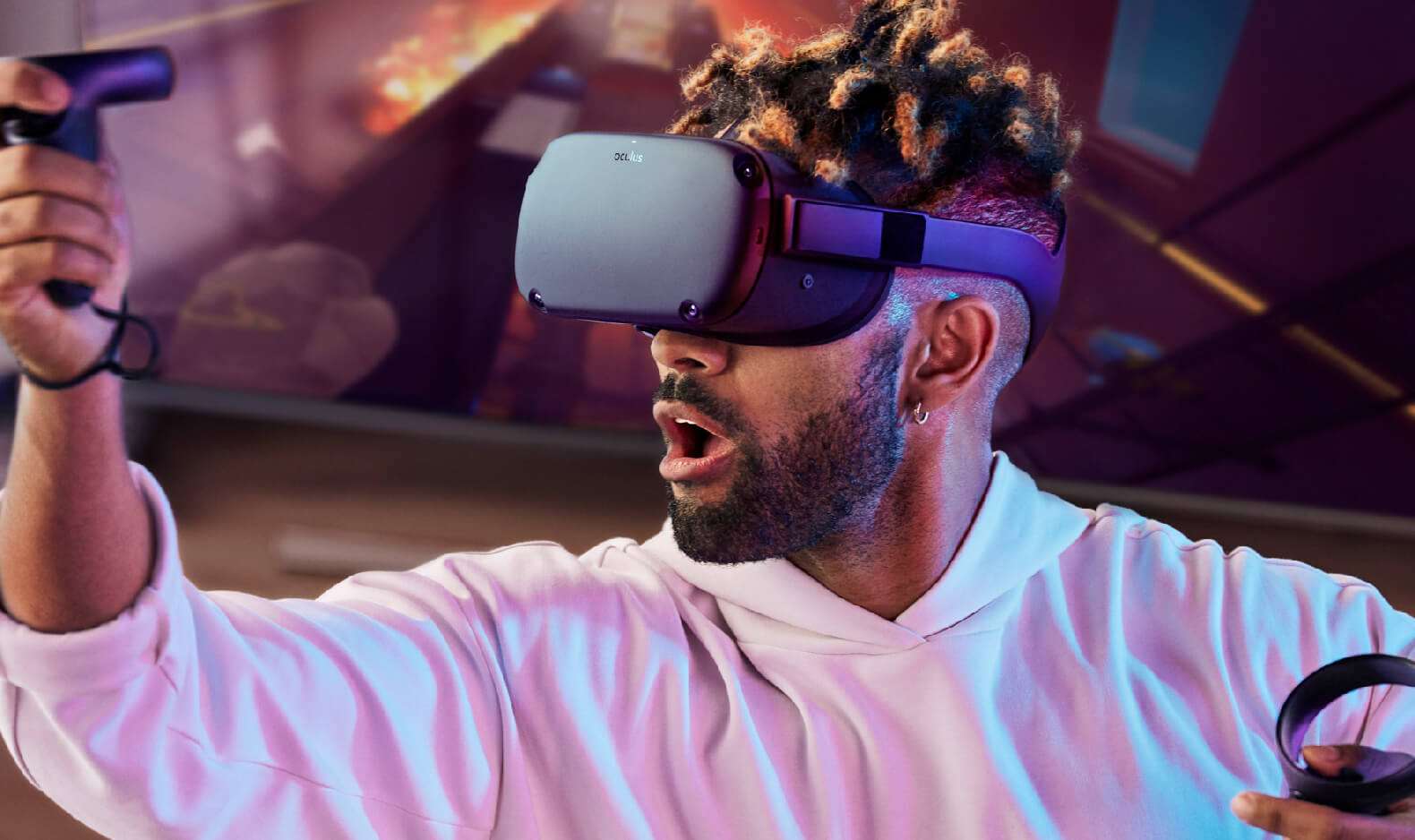
Augmented reality (AR) and Virtual reality (VR) are two technologies used for more innovative and interactive experiences with our electronic screens.
AR (Augmented reality) uses real-world settings while VR (virtual reality) is completely virtual or imaginary space.
In general terms, AR users can control their presence in the real world and have the ability to enhance the virtual and real worlds.
On the other side, VR users can be available only within a digital space and have the ability to optimize the imaginary reality.
Both AR & VR can be experienced while sitting on your couch.
In a Virtual reality space, you can explore a computer-generated world; you could explore a beautiful site or an underwater system.
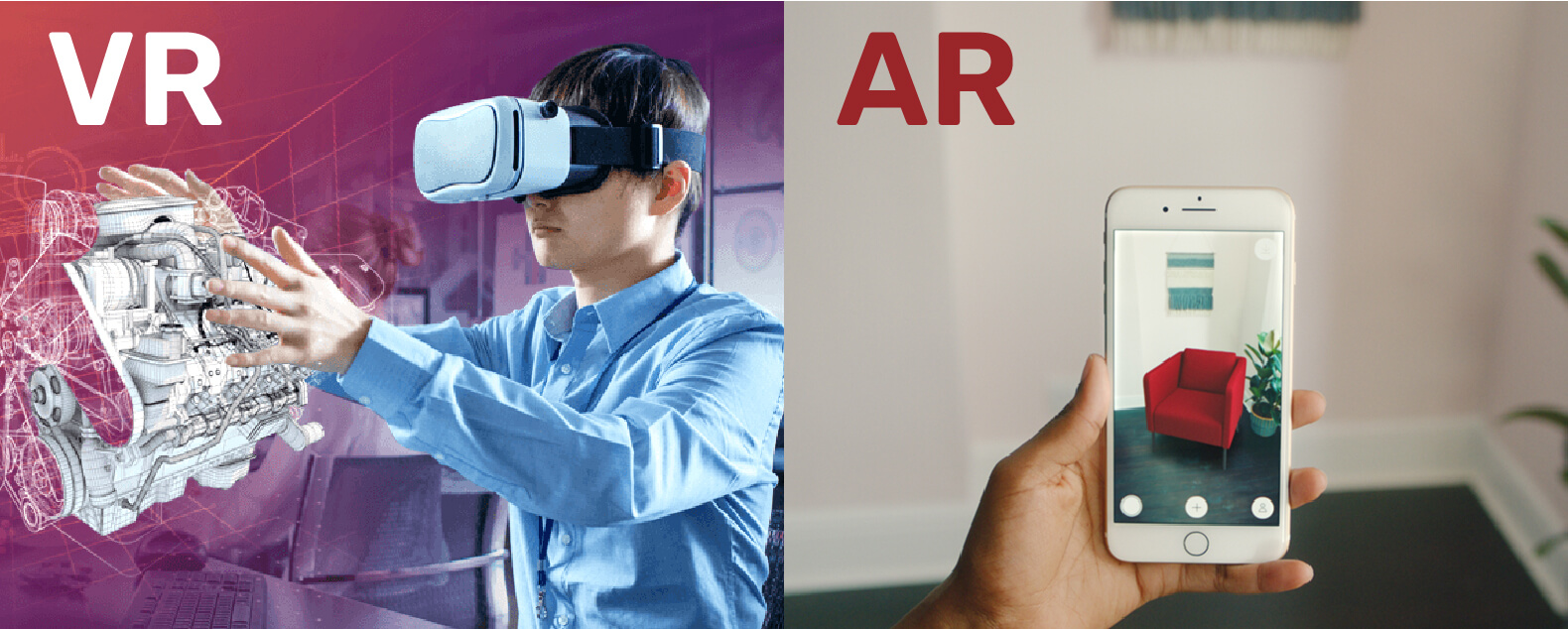
In augmented reality, instead of transporting you to a virtual world. It brings digital images and layers to the real world around you through digital devices.
i.e., you could watch a fish swimming through the world around you.
There are a plethora of opportunities to create exciting experiences in the AR & VR space. AAA games are a live example of AR to VR. UI designs for AR & VR will be one of the best trends in 2023.
##Hey, wait! There is much more to come, and we cannot leave this topic without discussing the top 3.0 website designs trending in the upcoming year 2023.
In past years we saw a rapid change in our lifestyle and shopping methods. And now we all strive for innovations and new technologies.
The upcoming year 2023 and the future will welcome new methods to make things more convenient and easy to handle.
Let us discuss more upcoming and running trends to be followed in the year 2023 that will rule the IT sector with its super-apps and features.
The 3.0 Web designs are majorly divided into three parts: AR, VR, and The Metaverse.
Now we have a clear vision of AR & VR, let’s dive more into this topic to understand web 3.0 technology.
#14 MR or Mixed Reality
MR or Mixed Reality can be described as a combination of AR & VR.
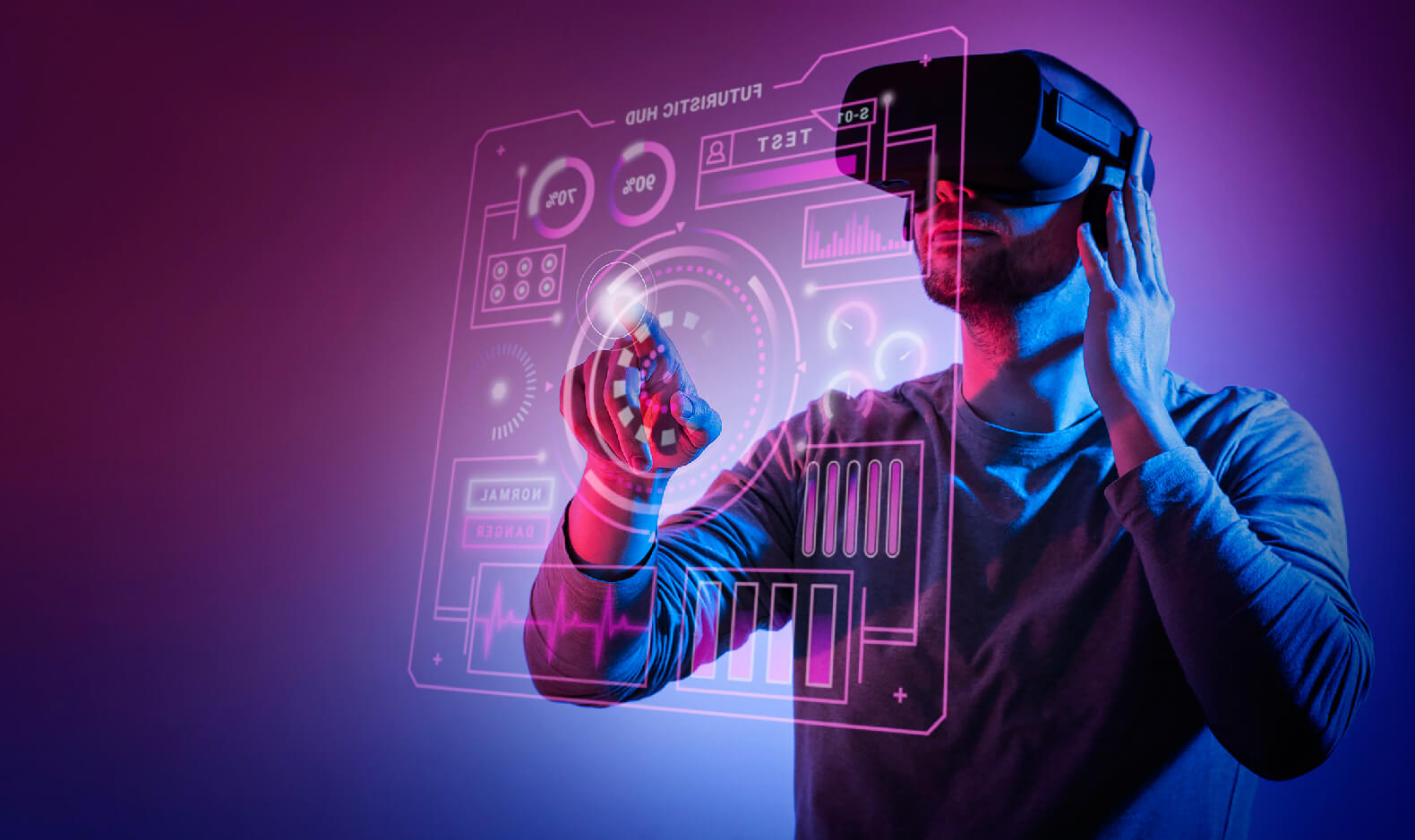
MR lies somewhere between AR and VR, as it blends the real and virtual worlds. MR is simply a marketing spin for AR and VR.
MR covers all aspects of virtual reality (VR), augmented reality (AR), and the Internet of Things (IoT), but goes beyond these three spaces.
This technology is a new concept and not simply accessible in the real world.
MR would be a new wave in designing and computer industries approached by mainframes, computers, and smartphones.
It allows us to share screen-bound experiences with our friends by providing an instinctual interaction with data.
People don't even know that the AR filters they use on social media are the experience created through MR.
Some great examples are shopping apps, social media filters (Instagram filters, Snapchat), virtual makeup apps, and others.
The technology offers interaction with digital components in human space. We can use gestures to move digital elements in a virtual place and can see other people sitting beside us.
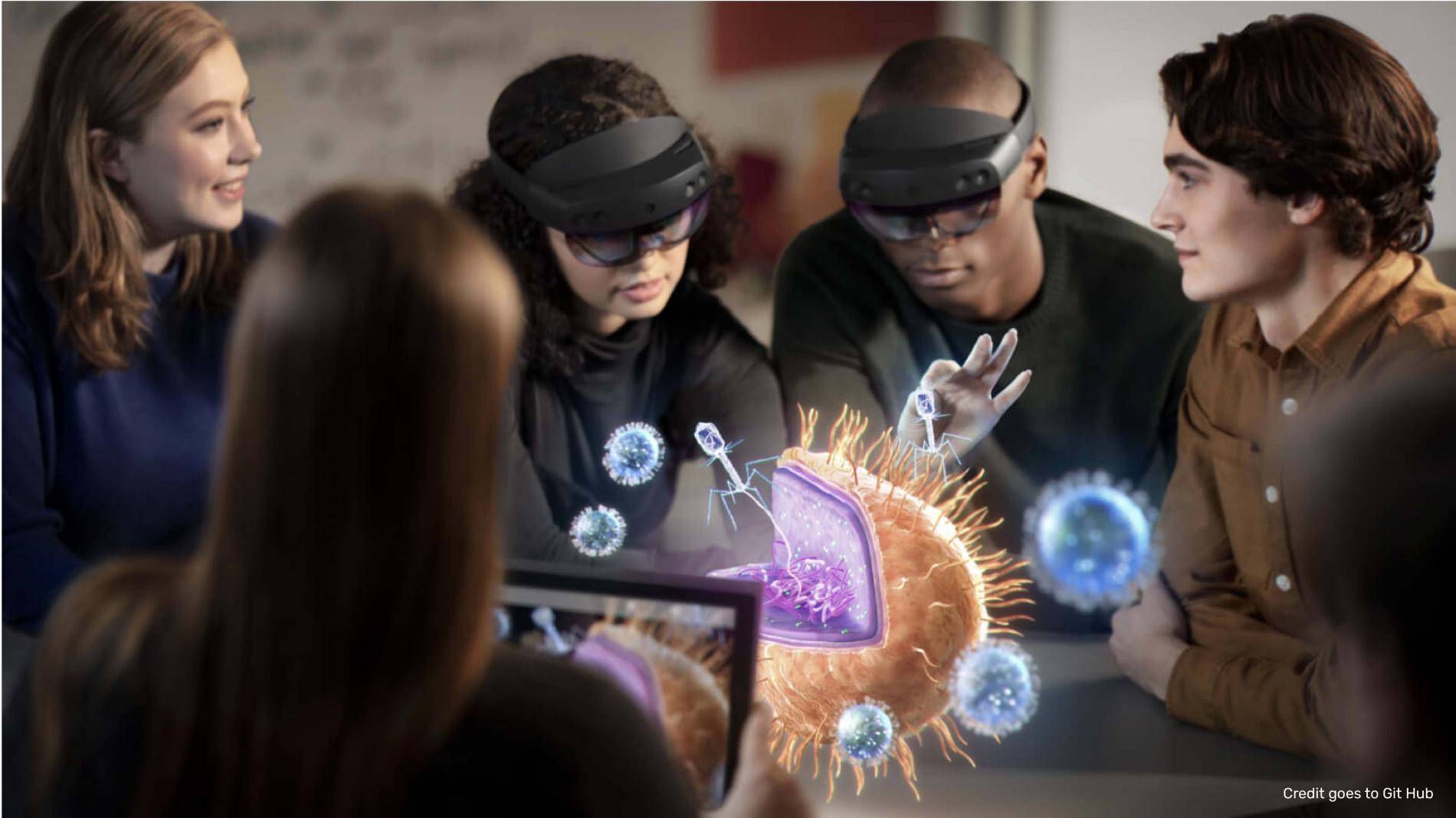
Mixed Reality has the potential to explore new dimensions like holograms and then holoportation.
Although the possibilities are still discovered in MR, the mixture of the real and digital world has a plethora of exciting and promising things for the future.
In the upcoming year 2023, MR technology will be on the top list of UX design trends and UX designers will explore new doors in this field.
Well !! We Can Not Stop Just Here.
Industries are currently working on AR, VR, and MR. But researchers are taking one step forward and they have explored more dimensions in this field. Two new terms have also been introduced - XR and Holoportation.
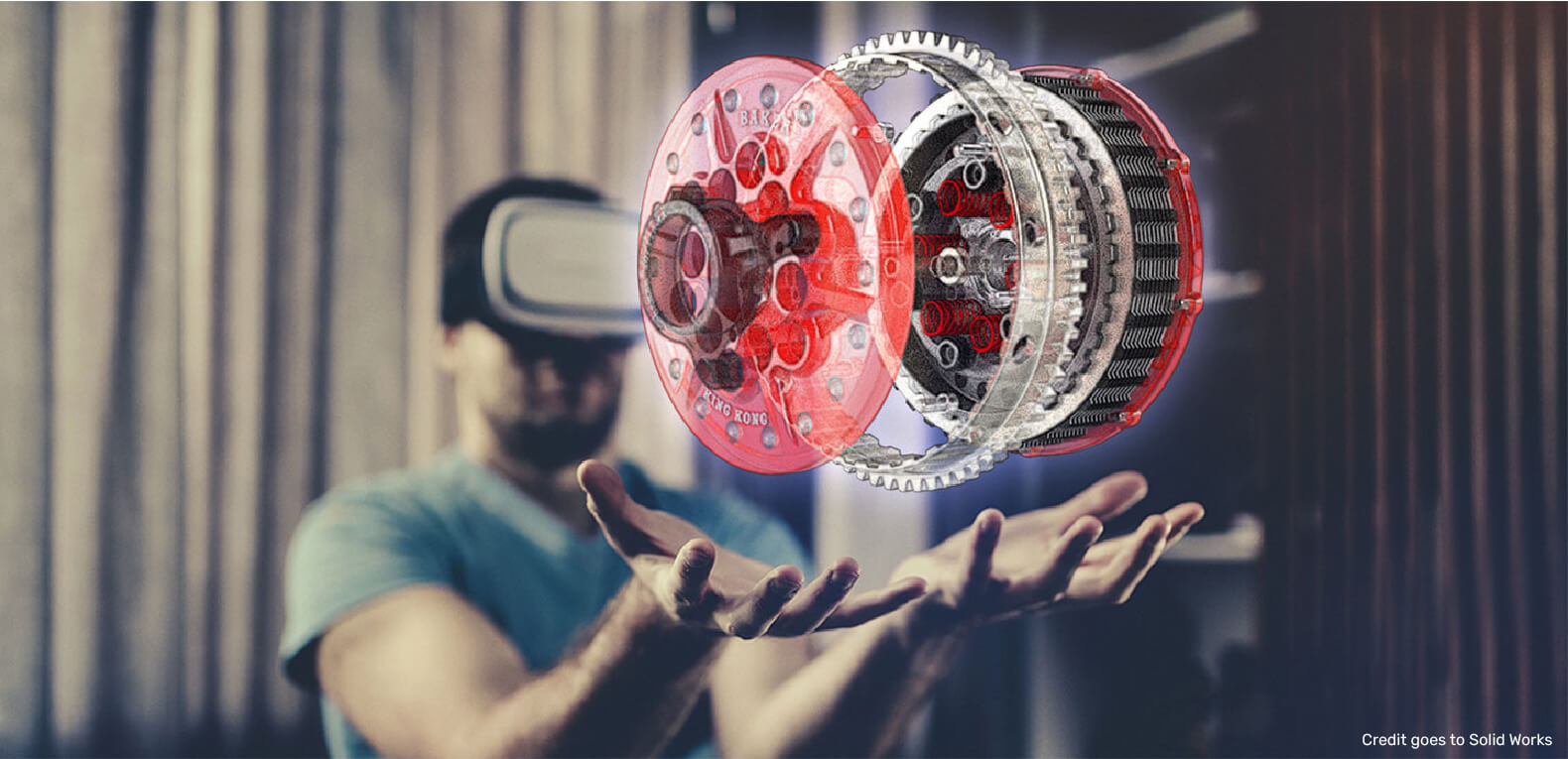
#15 XR or Extended Reality
With the advancement of technologies, we have started to see the rise in altered realities. When people are experiencing AR, VR, and MR, new technology has come into existence. We call it XR.
Extended reality or XR is the new term in the world of technology, that combines all real-and-virtual environments including human-machine interfaces with the help of digital technology and wearables.
It can represent AR, VR, and MR in a single frame. XR is a superset of the spectrum that ranges from "a complete real" to " a complete virtual" concept of the reality-virtuality continuum. EX: live map view for traffic detection.
XR (Extended-Reality) is the technology that can switch between AR, VR, and MR. This technology can explore new opportunities for many e-com businesses in real and virtual environments.
XR can be experienced with other technologies; AI (artificial intelligence), 5G networks, Internet of Things (IoT), and others.
Using extended reality, people can roam around in virtual spaces, and experience that real feeling in an immersive way that they are interacting with real things in virtual space.
Some Examples of Extended-Reality are
1. Healthcare: Medical professionals can have a better understanding of treatment and training possibilities with remote collaboration.
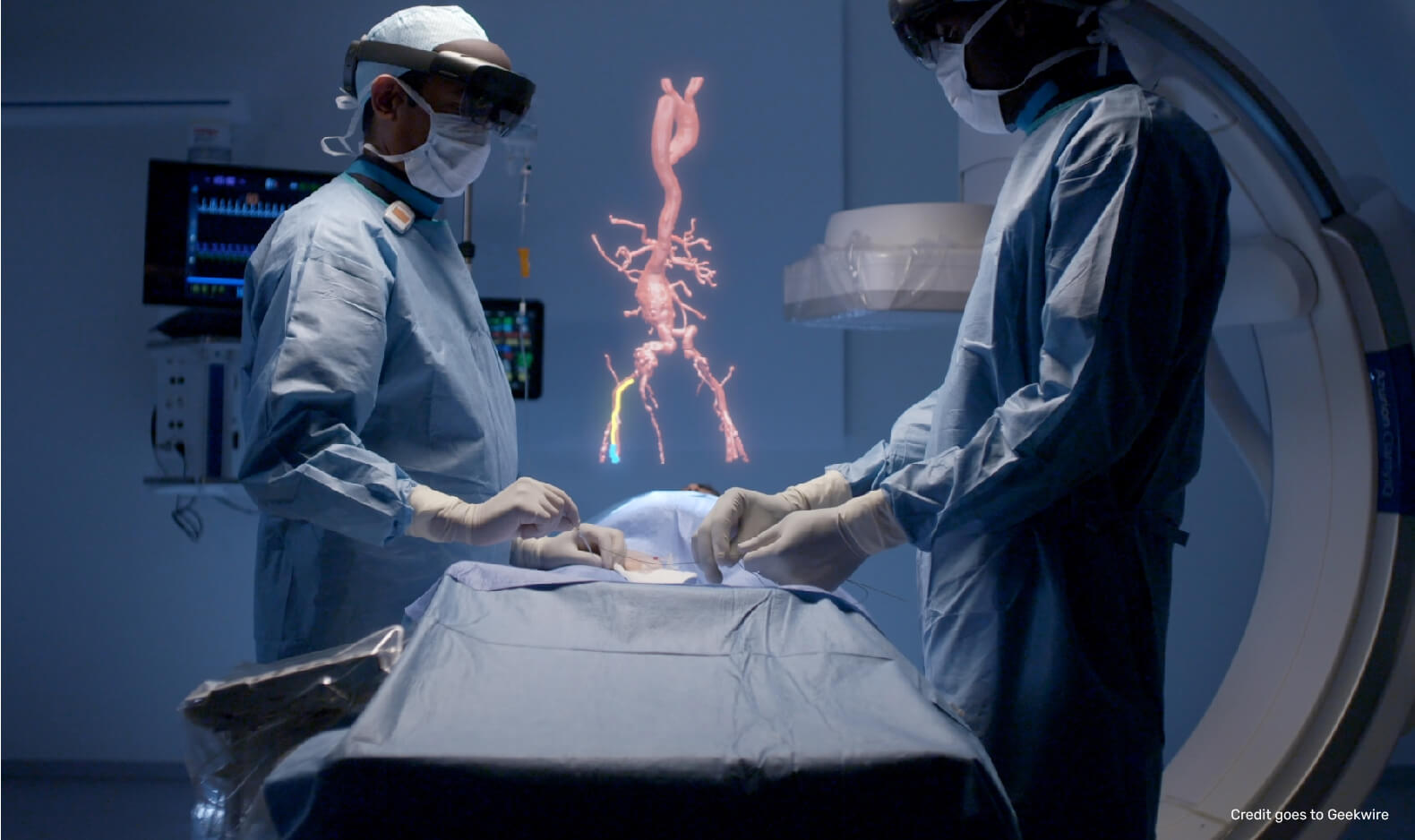
XR technology is opening up new opportunities for medical practitioners and holds a promising future in healthcare. XR solutions assist surgeons in the operation theater by saving time in obtaining relevant information for critical decisions.
Some of the major uses of XR in the healthcare sector include training new physicians and providing them with a deeper understanding of disease or patients.
2. Real Estate: Architects, brokers, and property buyers can have a great experience with XR designs and layouts.
While the XR is not yet a reality that can permanently be part of the present in our daily lives, it is already determining the development of the digital world; reflected in newer technologies, such as Metaverse.
#16 Holoportation:
Holoportation is a combination of hologram and teleportation. It enables the user to hear, see and interact with remote participants in 3D (holograms), as they communicate in the same physical space.
Holoportation can be understood as 3D telepresence in the end-to-end system for AR (augmented) and VR (virtual reality).
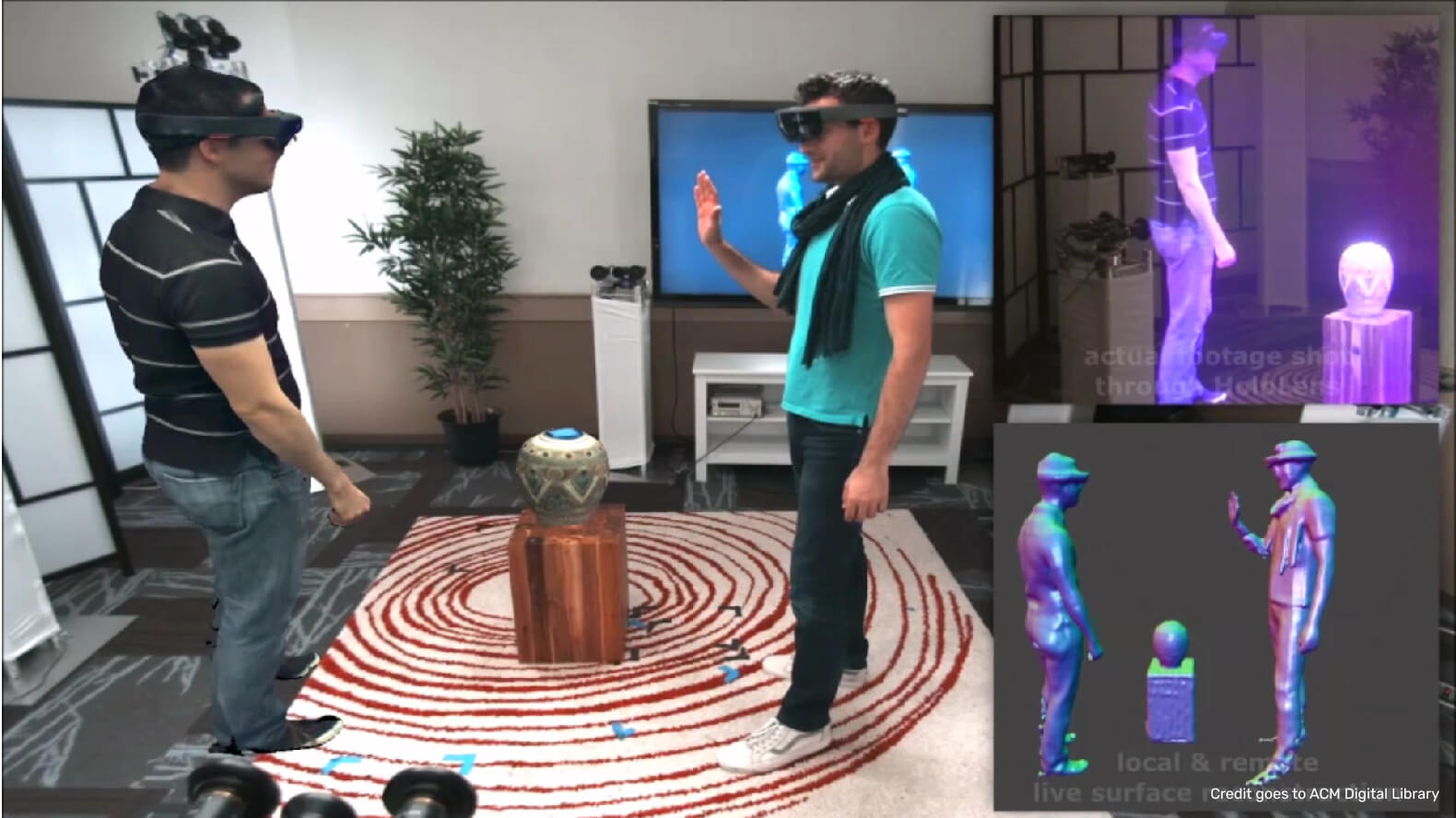
With the help of MR displays and VR wearables, holoportation allows a user to interact and communicate with the remote person and gives a feeling of face-to-face communication.
Holoportation can be used for virtual meetings and other brainstorming live sessions while users live in separate parts of a country.
In holoportation, users can actually draw, annotate and innovate in an MR space using HoloLens 2.0. i.e., customizing a room where each object complies with real-world-based physics.
More tools are being developed for new technologies. During a virtual meeting in the metaverse, one can pull up charts, text, and more built-in features and apps.
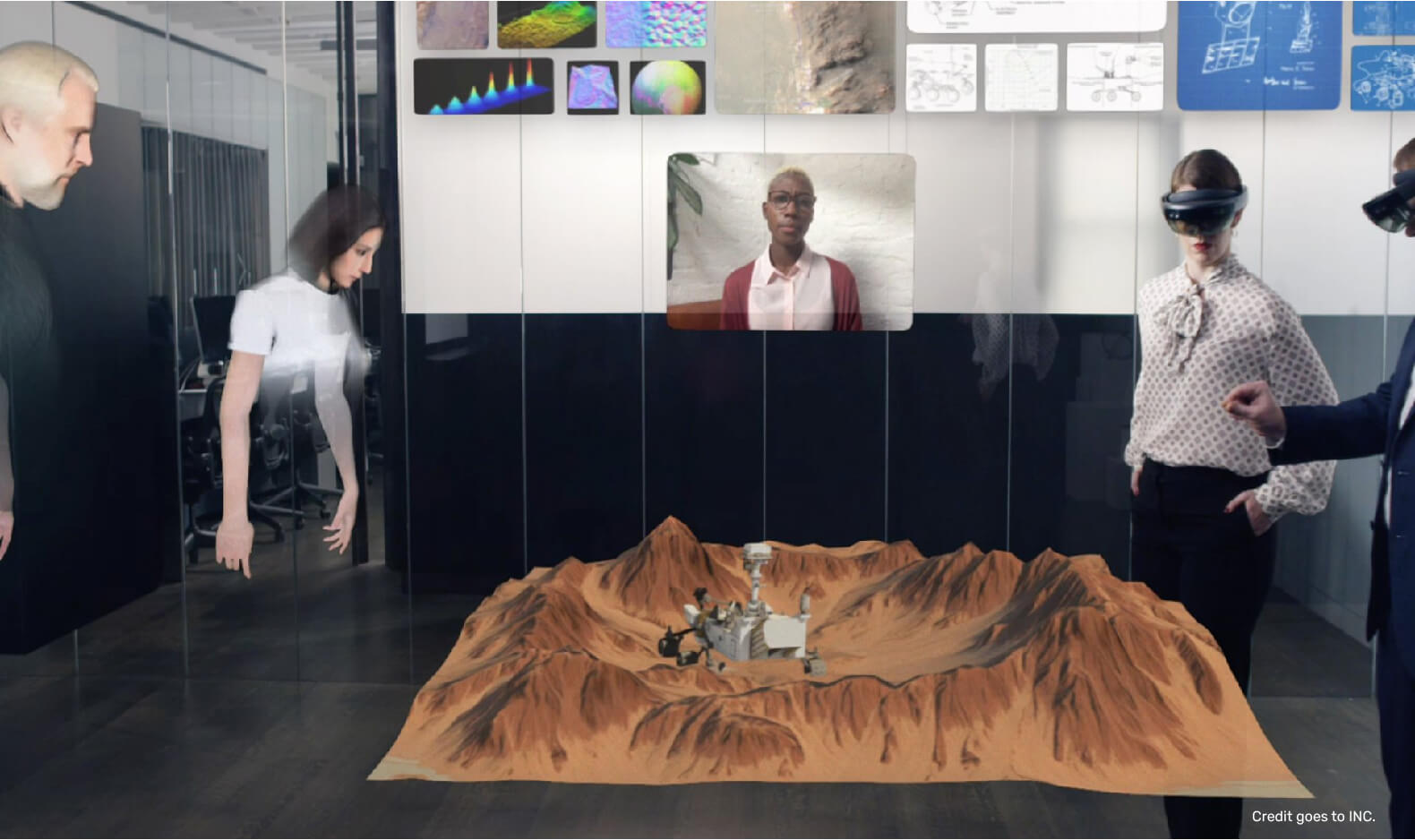
This feature allows users from remote locations to join the collaborative and share holographic experiences in their virtual meetings.
In the next step, holoporting would be possible for people on the call, allowing astronauts to go to space and back on earth.
#17 Metaverse
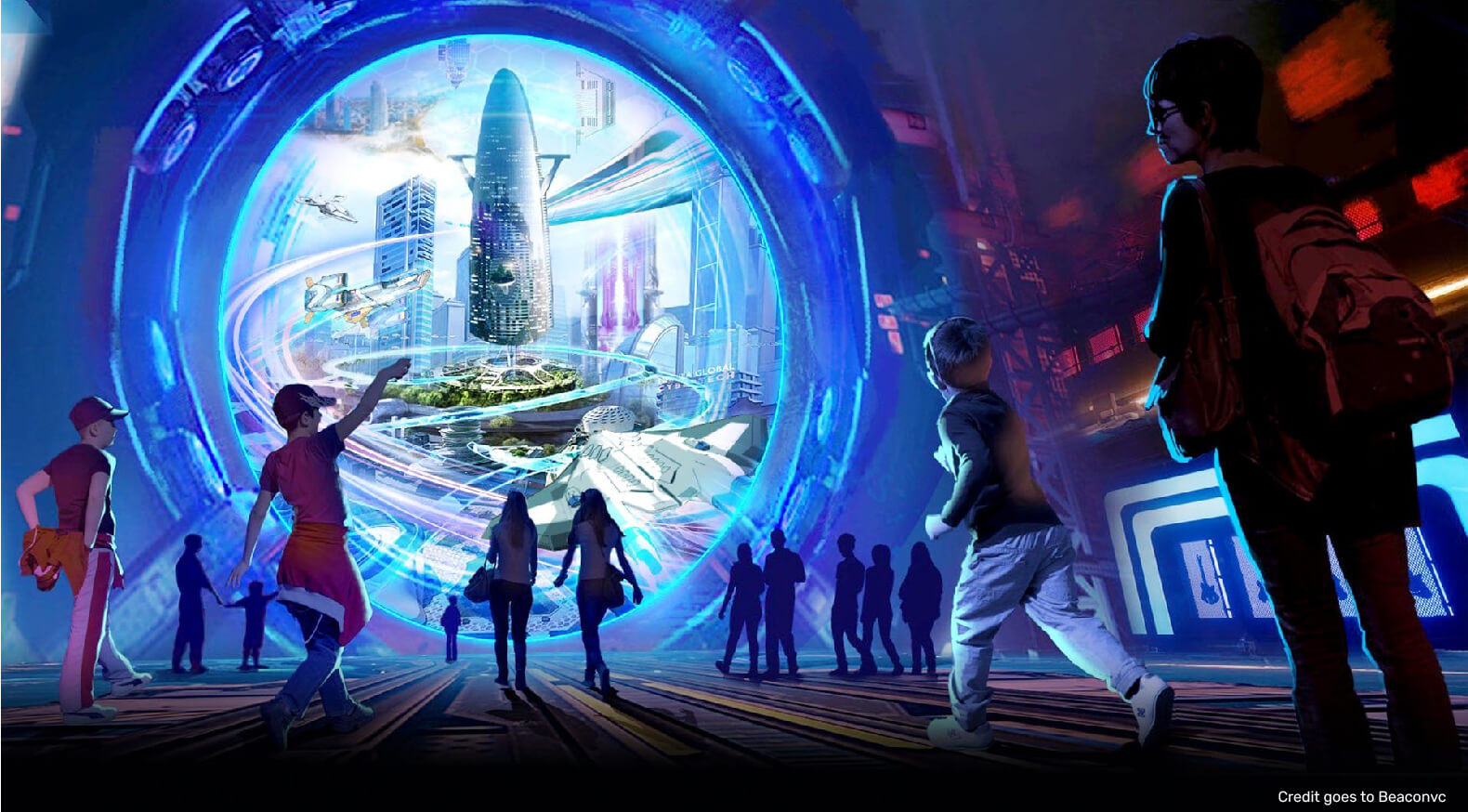
The metaverse can be described as a persistent virtual universe where VR and AR/MR experiences can be shared.
It is the next innovation for virtual experiences.
VR, AR, and MR are the top key elements of the metaverse, which essentially offer a 3D immersive virtual experience to its user.
It is a combination of augmented reality (AR), virtual reality (VR), mixed reality (MR), web3.0, blockchain, cryptocurrencies, social media, and much more.
As for now, all we know is that metaverse can be experienced in some gaming software, i.e., Free Fire. But it is a much broader concept than just virtual gaming.
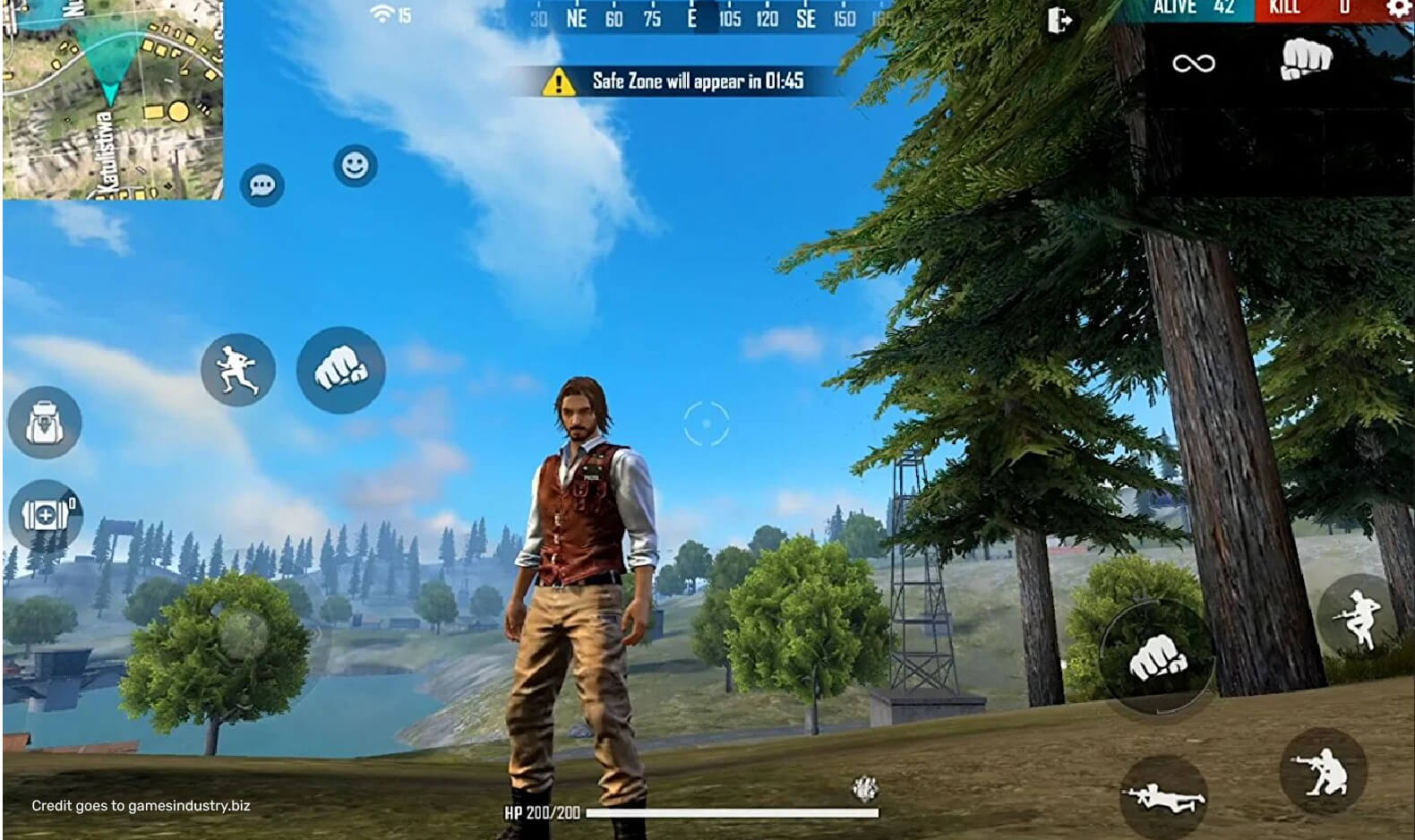
In general terms, the Metaverse is a graphically rich virtual platform, with some degree of verity, where people can play, shop, work, and socialize with other users.
It is a 3D network of virtual realities focused on social connection. A metaverse technology is a virtual world that allows developers to create everything from VR space to augmented reality.
The word "Metaverse" was first introduced by Neal Stephenson. He used this term in his science-fiction novel. Now it is a big term in the world of technology.
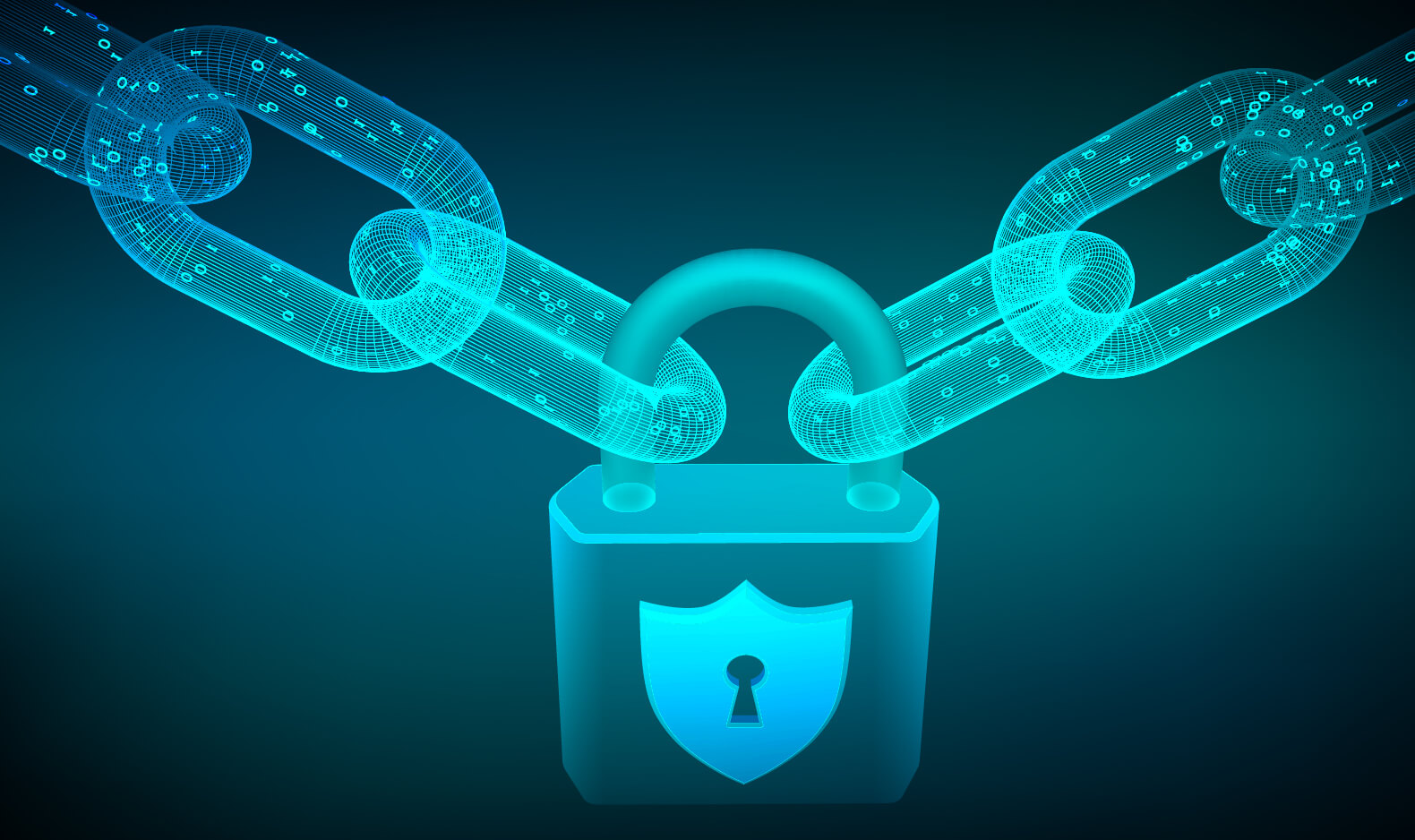
Metaverse uses blockchain technology since the future of the internet is decentralized. Blockchain is not a new term in the industry and is being utilized widely across the globe.
With its decentralized nature, blockchain is crucial in the development of metaverse. This time blockchain technology is used in NFTs and cryptocurrency.
With multiple interactions through the internet and technologies, the metaverse can bring fascinating opportunities to its users. Metaverse is responsible for opening new doors to web 3.0.
#18 Web 3 For Designers/PM: Why Is Everyone Talking About It?
User data is the most valuable asset for business and social media platforms. Organizations can use it to boost their eCommerce or can sell it to third-party competitors.
Companies like Microsoft and Amazon have invested in providing centralized web services that hold millions of User data and convert it into profitable insights.
The exact shape of the future web isn’t set up by any means. We’ll explore what exactly Web3 is and some specific examples of technologies that fit in the Web3 mold.
The drawback of the Web2 approach is that a handful of platforms own the data of their users and can control or manipulate them in certain ways. That is not always considered ethical or democratic. And that is where Web3 is an alternative solution.
Through the use of blockchain technologies and decentralized data storage, Web3 will take away the data ownership from the software companies and give all authority back to the users.
Users will keep all of their personal data in a cryptocurrency wallet like MetaMask, or TrustWallet, and then can decide who gets access to their data and their identity.
This practice will allow them to interact with other types of blockchain apps and choose who can read their data and who can’t.
WEB 3 (commonly known as 'Web3.0') is a relatively abstract set of ideas about how the future 'web' should operate.
The web is different from the internet. The web is one type of service that runs on the internet.
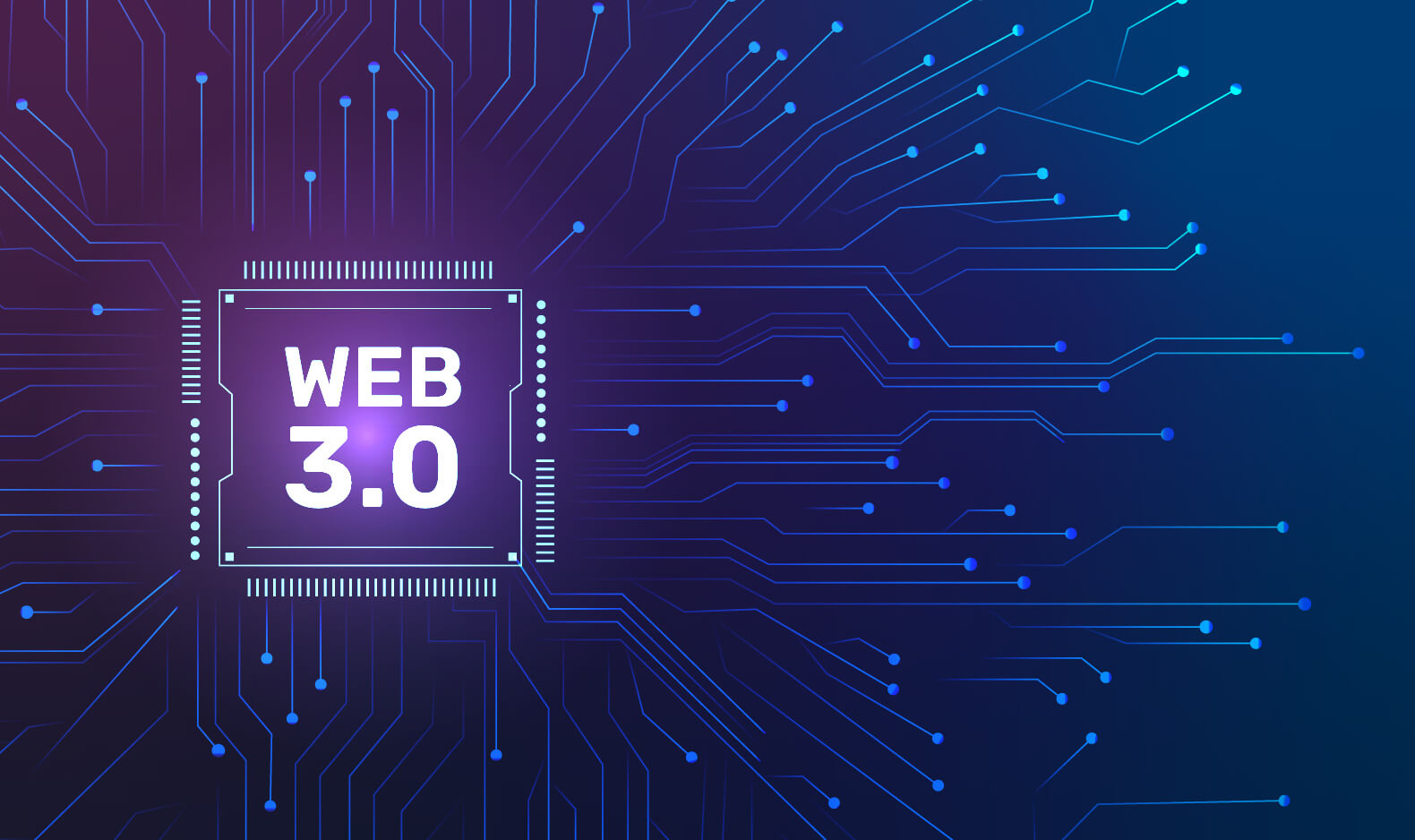
The idea of Web3 - is a web that is not controlled by a small number of central authorities.
The semantic web solution (Web 3.0) is used to store all the user data in a centralized place and allows users to control who can access their data.
For example, we use URLs or links for information on the current internet. These links connect documents (old information - not facts), and the user will end up with information and data silos.
Let's take a general example; if you switch jobs and update that information on LinkedIn, your Facebook details will not be updated automatically since they are not linked.
Tim Berners-Lee (inventor of the World Wide Web) wants to connect all user data so that you only need to change the information once. In order to get more precise and accurate results.
Because all the same information will appear everywhere, and the more you can connect things at the data level, the more people will have access to that intelligence, and the more they can get insights.
Theoretically, Web3 puts user data and web content into users' control. It also provides a facility where users can profit directly from their data.
Therefore, Web3 is a democratized web-based open-source application that offers users complete data control.
The Difference between Web 3 & 3.0
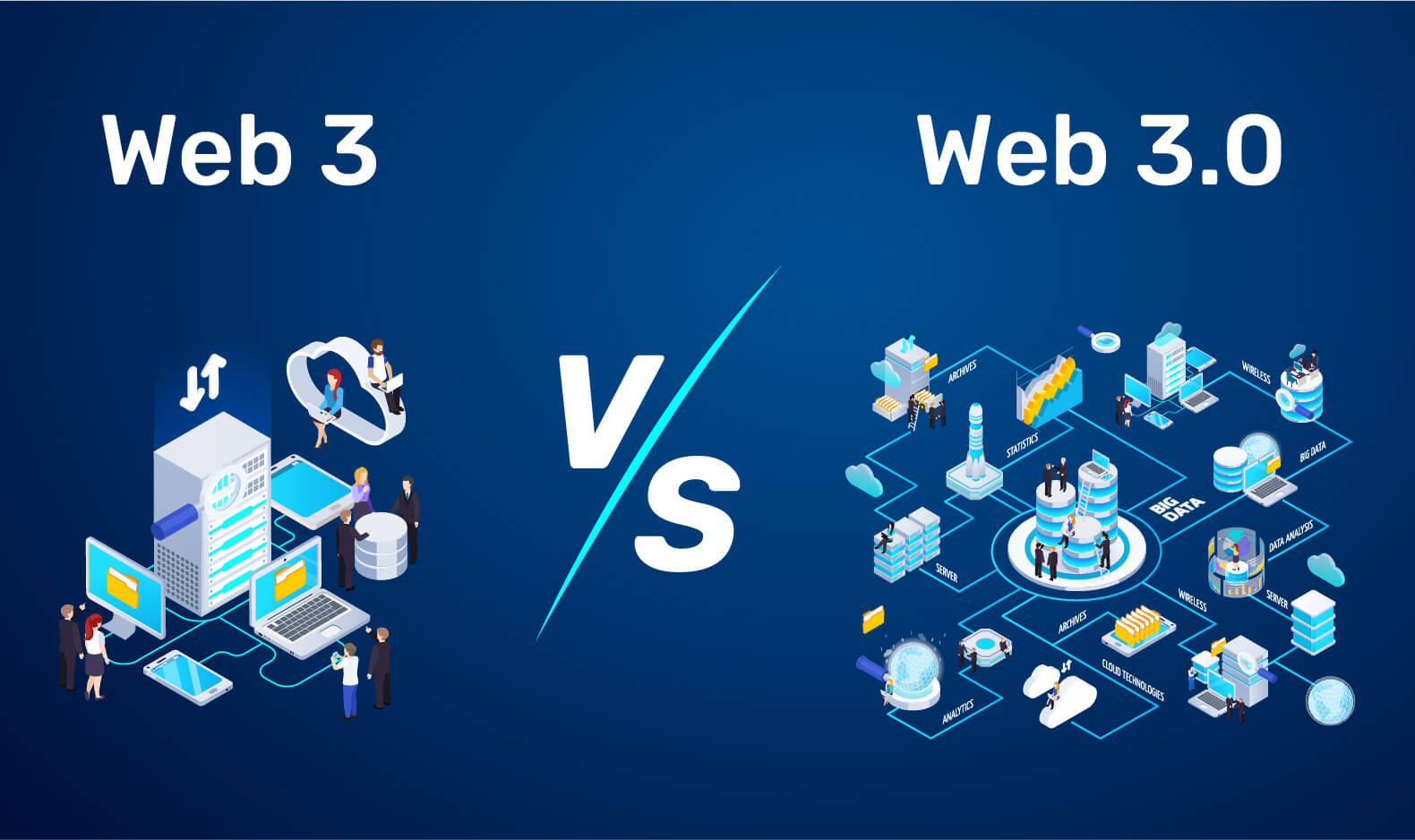
Web3 is built on blockchain whereas web 3.0 uses data interchange technologies like RDF, OWL, SPARQL, and SKOS.
Web 3.0 is a complementary but completely different concept to web3 (the decentralized web). Web 3.0 (or Semantic Web) is an extension of the Web technology standard.
In practice, Web 3.0 hasn’t become a reality yet, but modern web technology can already do things that Web 3.0 describes.
- The difference in this formation is that data in Web3 (blockchain) is difficult to change (distributed over many places) while data in Web3.0 is easy to change.
- The core difference between both is that Web3.0 is semantic (or linked), while Web3 is decentralized.
#19 What would be The Next Big Trend on the Web?
Current UX trends have vast opportunities for 3rd dimension to give us a more realistic user experience with the help of smart devices.
No doubt! Web3 and Web 3.0 will be on the top list of trending UX designs in 2023. Let's have a deep dive into the next big trend in the design world: "WEB3.0"
The term “Web3” was introduced by Gavin Wood (co-founder of the Ethereum blockchain) in 2014. Web3 is a democratized web; based on an open-source application that allows users to profit directly from their data.
There’s some confusion because of a different concept Web 3.0 (coined by “father of the web” Tim Berners-Lee). Web 3.0 (the Semantic Web) is an extension of the Web technology standard.
Till now, Web 3.0 has not become a reality in practice, although modern web3 technology can already do some of the things that Web 3.0 describes.
Now that we have clarified the difference between Web 3.0 and Web3, let's look at some of the Web technologies that qualify as Web3.
1. Blockchain Technology
Blockchain is a technology that works on Web3, and many other Web3 technologies rely on blockchain to work. By this, the blockchain is the foundation of Web3.
The blockchain is a ledger or data record of transactions, that exists in the form of 'blocks' on multiple computers all over the internet.
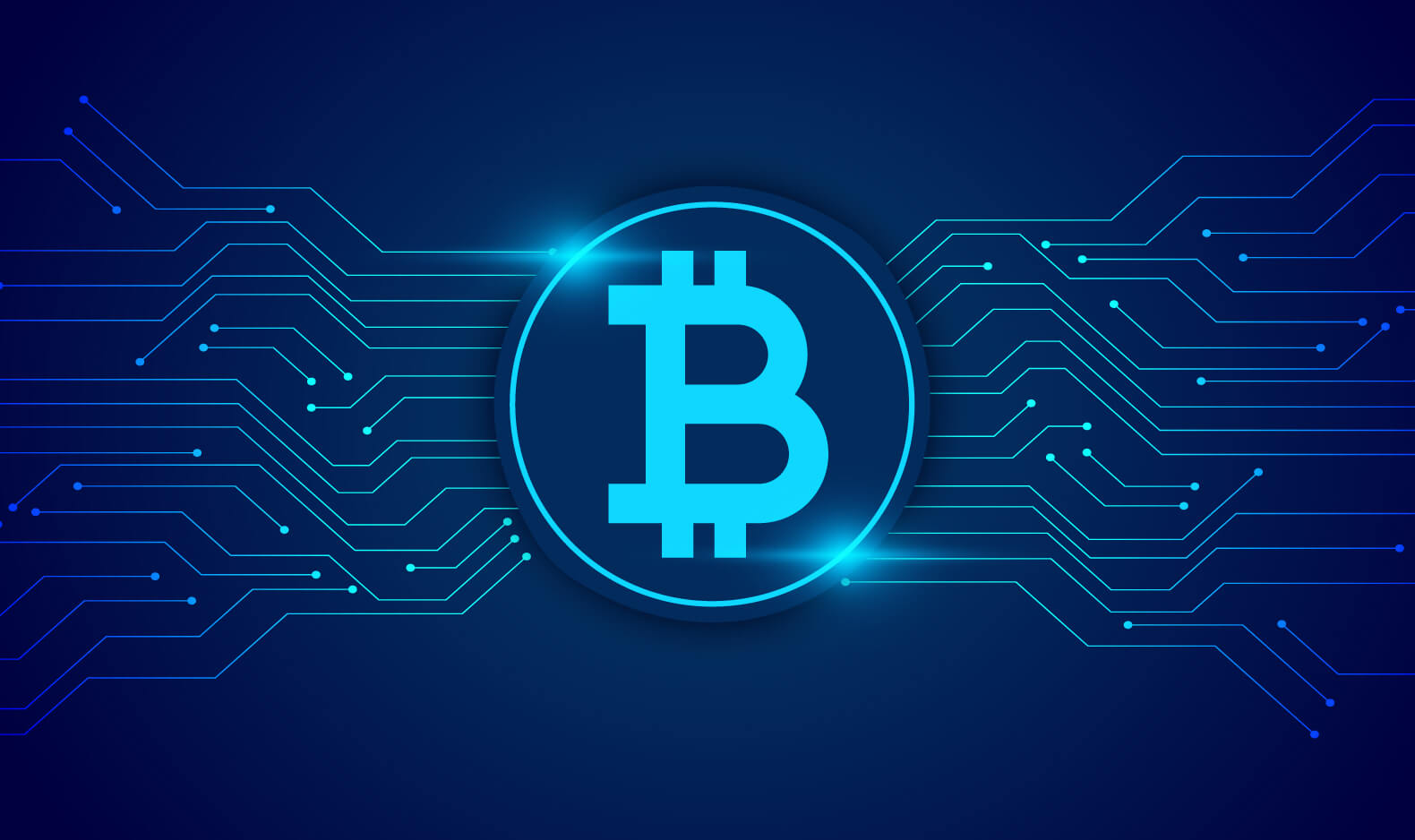
When a new block of transactions is added to the chain, each database copy must be agreed upon and modified. After the completion of the entire process, all transactions are open for public view and permanent.
Any attempt to edit/modify the data records corrupts the chain(If a block value is edited then the hash value associated with that block changes and the block will be disconnected from the network). Since valid copies of the data are spread across the web, no central authority can control it.
Blockchain technology can be used for any application to record all transactions, but most people associate it with cryptocurrencies.
2. Cryptocurrency
Cryptocurrency (or crypto) is decentralized digital cash that is not controllable by any government or central authority such as a bank.
Cryptocurrency uses blockchain technology to keep a record of the data, i.e., how much currency is there and who holds that amount.
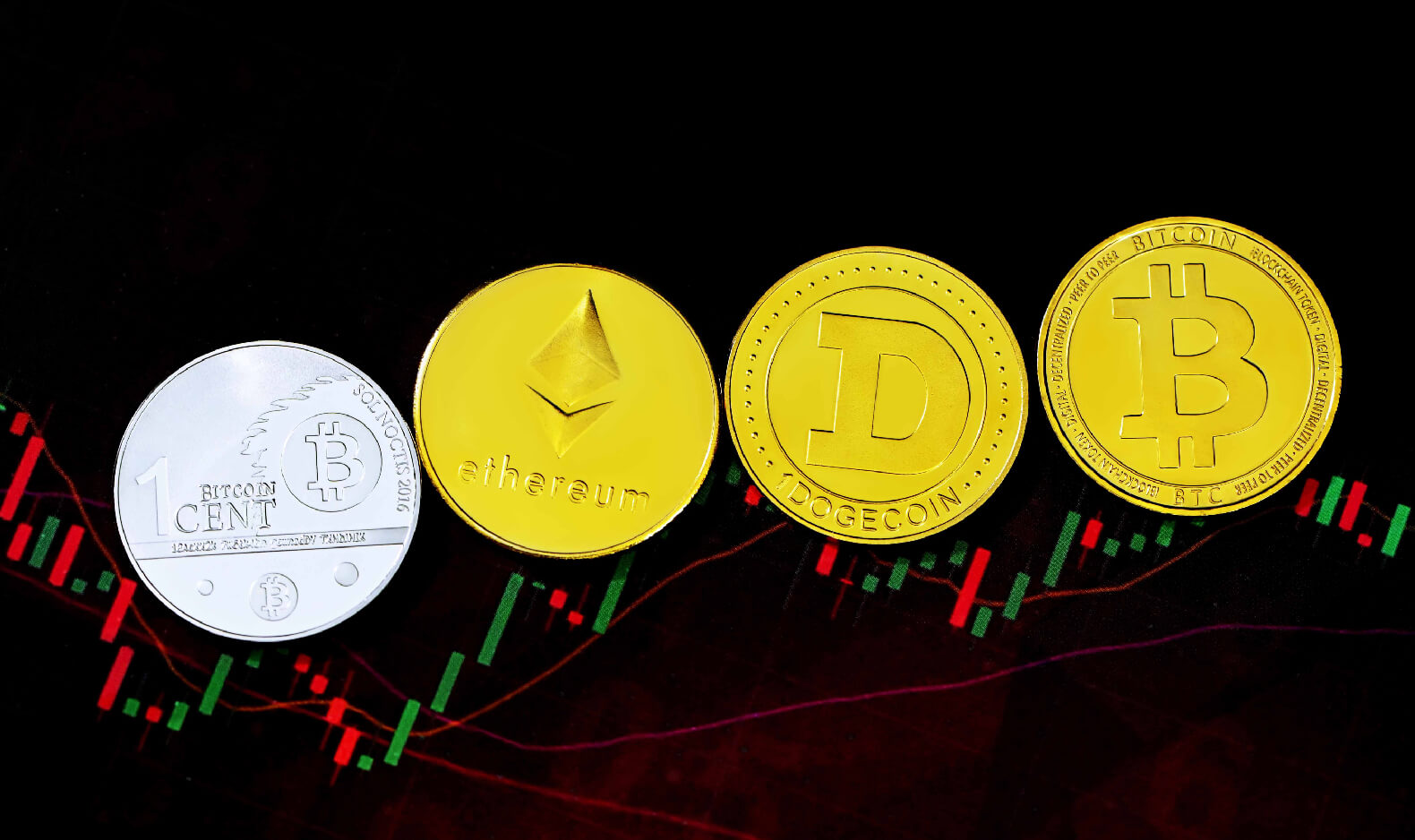
The supply of cryptocurrency has increased through the mining process, which provides the computational power to run the blockchain in exchange for new currency.
That is how it works with some cryptocurrencies like Bitcoin. In the case of the Ethereum blockchain, the end-users pay a 'gas fee', which is received by the Ethereum miners who process the transaction.
3. NFTs or Non-Fungible Tokens
In the year, NFTs exploded in popularity, and this is the term you have probably heard before. NFTs are another element of Web3.
These are essentially a form of crypto, but each NFT is unique and rigid. That cannot be exchanged with another; This is the meaning of the name: Non-Fungible Tokens. NFTs are linked to the digital or physical assets of the user.
One big thing is that no legal authority necessarily recognizes NFTs, which that means; all you're buying at this point is control over a string of letters and numbers.
However, this may change as NFT technology develops and perhaps benefits from the legislation.
At a very high level, most NFTs are part of the Ethereum blockchain, but its blockchain also keeps track of who is trading and holding NFTs.
Buy NFT Artworks from Opensea.io
4. ICOs or Initial Coin Offerings (ICOs)
ICOs are directly related to cryptocurrencies because the term “coins” on the name represents crypto.
When you invent a new type of cryptocurrency (possibly with an exciting innovation), you will need to pay initial money to start the trading.
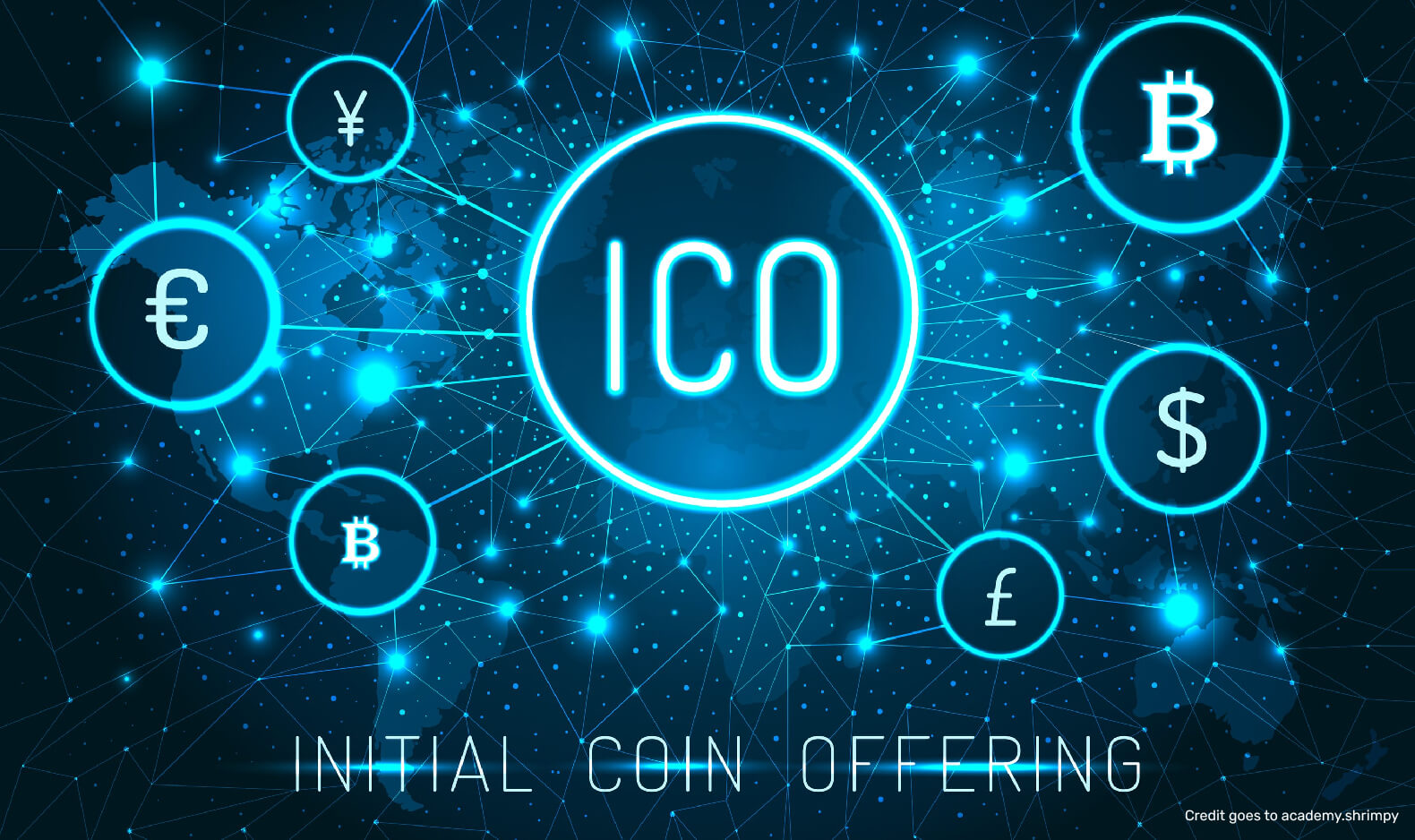
In general, people who put money in ICOs are buying your crypto (bitcoin and Ethereum) in the hope that the value of crypto will boost overnight and give them a fortune.
Sometimes, ICOs are sold like shares of a company; but they do not provide ownership to buyers.
The value of the coins is then decided by - how valuable the company or its products promise to be. That's why ICOs have become so popular with startups looking for alternative funding that does not involve banks, angel investors, or venture capital.
There has been a lot of hype about ICOs, but frauds have also plagued them, and many people have lost their money. ICOs are not yet regulated like IPOs (Initial Public Offerings), and anyone can launch an ICO.
5. Decentralized Apps (dApps)
When you use a cloud service like Google Docs, you are using a centralized app. Google has control of all the information in your documents; it can read it all, access it, and control it.
But what if you could have the advantages of these cloud services without a central authority?
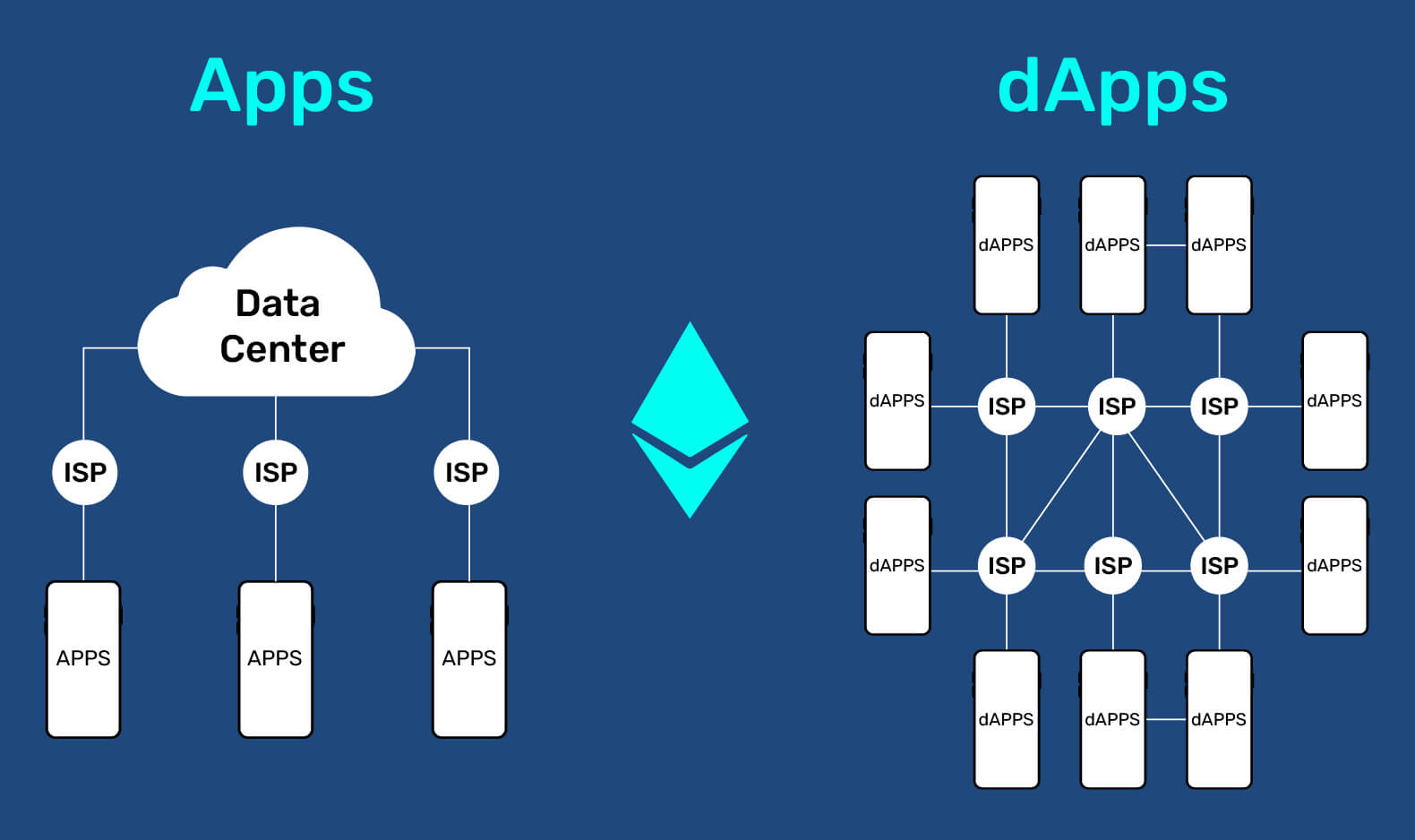
That’s where decentralized apps or “dApps” come into existence. Most dApps use the Ethereum blockchain to run their online computation, and so that computation is paid for using Ethereum as 'gas fees'.
However, dApps conform to Web3 requirements to be open-source, public, and secure through cryptography.
Therefore dApp users control their data and who can see it while taking advantage of cloud-service power to use a specific dApp is designed for.
The Ethereum blockchain is designed to support Web3 technologies from the outset and has a dedicated JavaScript library called web3.js. The script helps developers get faster with their Web3 projects.
6. Smart Contracts
Today, When you buy a car and take a loan from the bank for this. There will be a lot of paperwork, i.e., the bank makes a contract with you describing the rights and obligations for both parties.
Smart contracts can do the same job effortlessly, they don’t require a central authority to monitor anything. All process runs automatically according to the rules and logic of the contract.
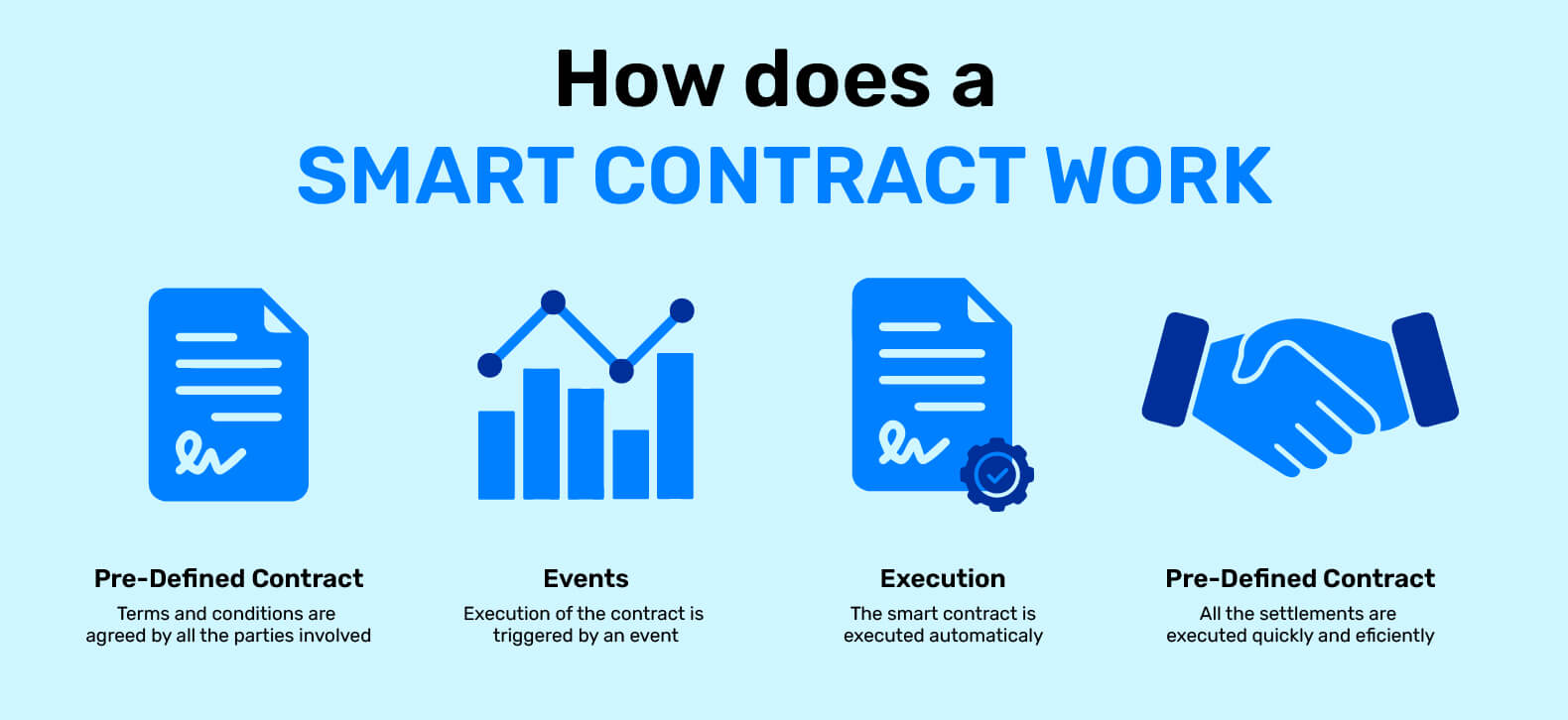
Smart contracts make it easier in a more affordable way than traditional contacts to provide financial services, or make legal agreements between parties.
They are also better and fairer that can not be manipulated once activated.
7. Distributed Computing or Edge Computing
Distributed or Edge computing is all about proceeding online data and services sooner to where it was requested.
Edge computing is a distributed computing framework that brings enterprise applications to data sources.
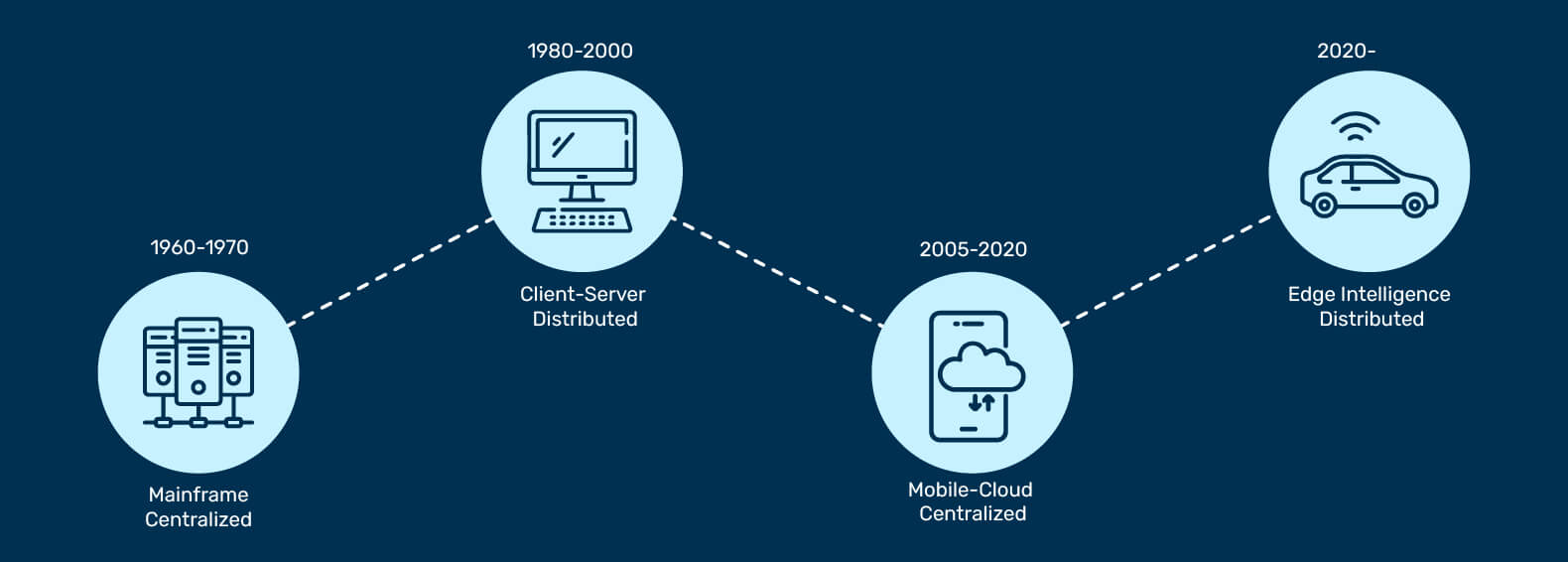
This proximity to the data source can provide strong business benefits; better response times, faster insights, and better bandwidth availability.
Edge computing works in the antithesis of Big Data computing; works in massive and centralized computer centers. Whereas edge computing is done at the literal edges of the network.
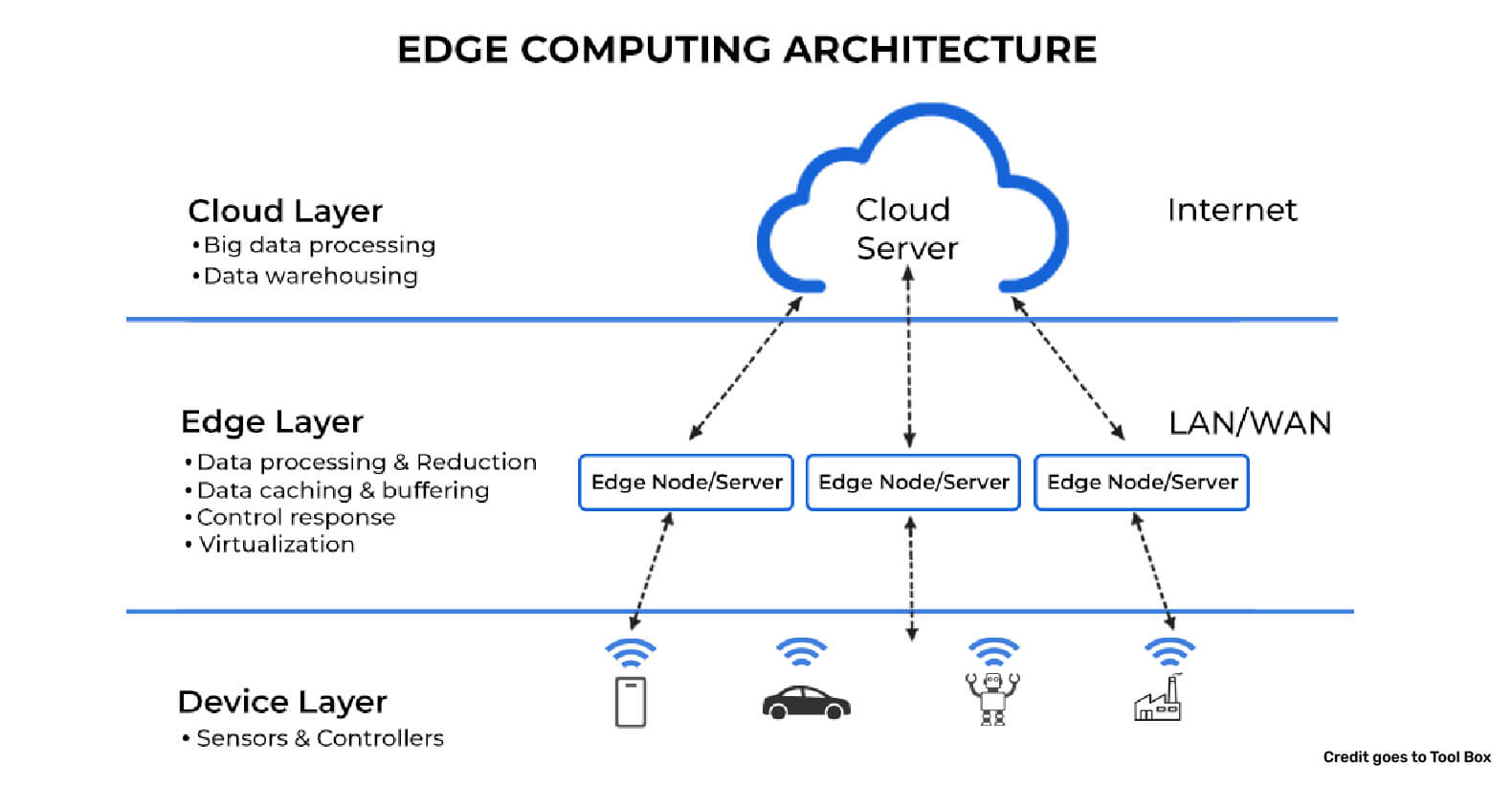
For example -
Data might be processed on your local PC before sending to a central location to be aggregated. It gives you control to combine the processing power of the devices with the edges of your network into one decentralized supercomputer.
With Billions of IoT devices to process that data is a real challenge. Edge computing provides a way to meet those demands- save on bandwidth, and quickly deliver on data requests.
8. DAOs: Decentralized Autonomous Organizations
All organizations have a centralized structure. This centralized structure involves executives and management, that command and control at every level to coordinate all the different people who contribute to the work.
A DAO flattens and simplifies that entire structure. There is no need for a CEO, managers, or anything like that. Each member of the organization has a voice and can decide when money is spent from the treasury and on what.
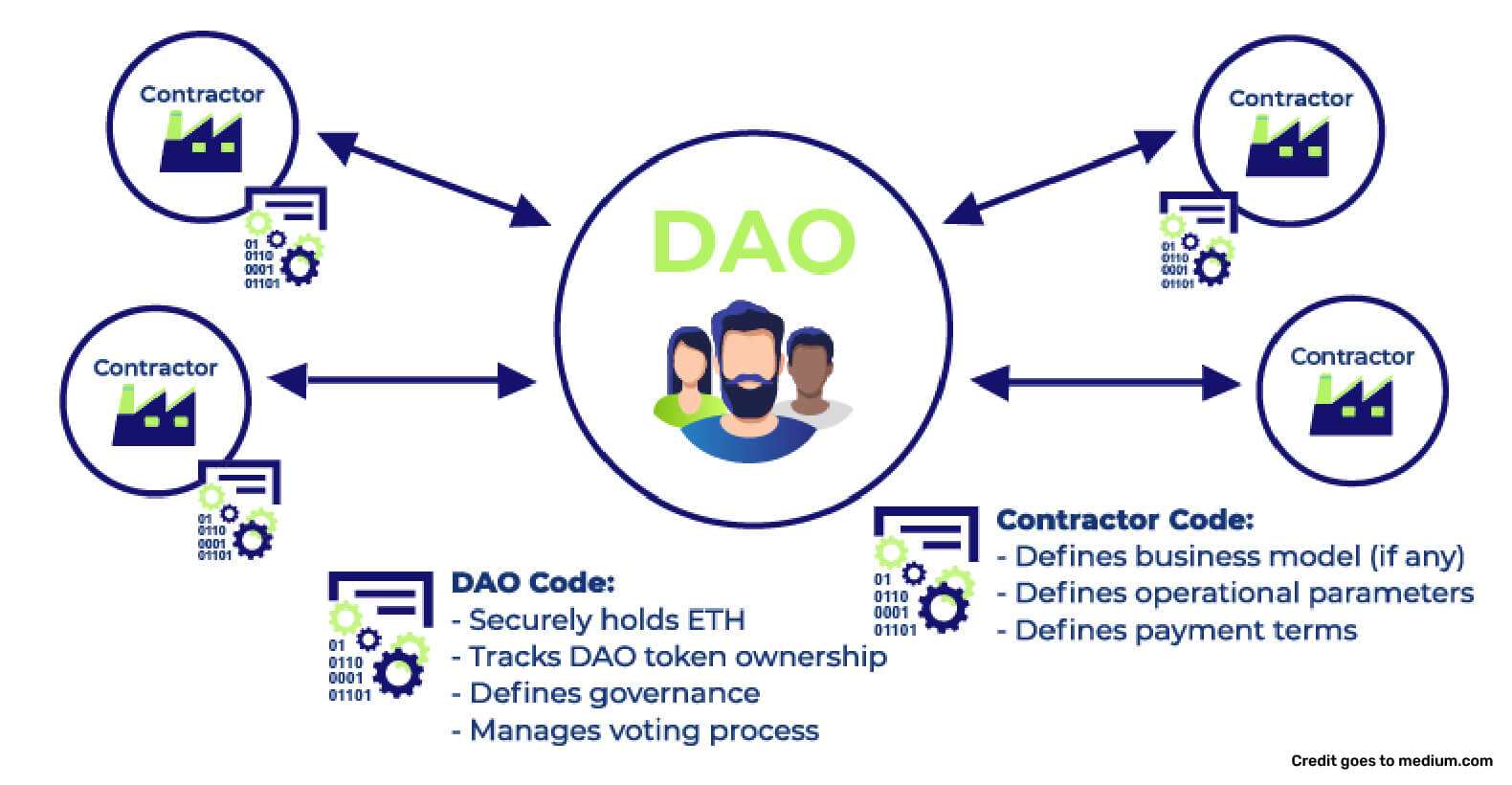
The organization’s rules are encoded using innovative contract technology in a permissionless/trustless blockchain.
There’s no need for the complex administration and departments that traditional organizations have developed to keep everything going.
DAOs also make it virtually impossible to commit fraud or default, since every transaction and its history is open to a public survey.
9. ML: Machine Learning & AI: Artificial Intelligence
We’ve seen the rapid rise of machine learning technology and some significant areas of artificial intelligence.
Our smart devices are full of these technologies. The voice assistant is a practical example of this.
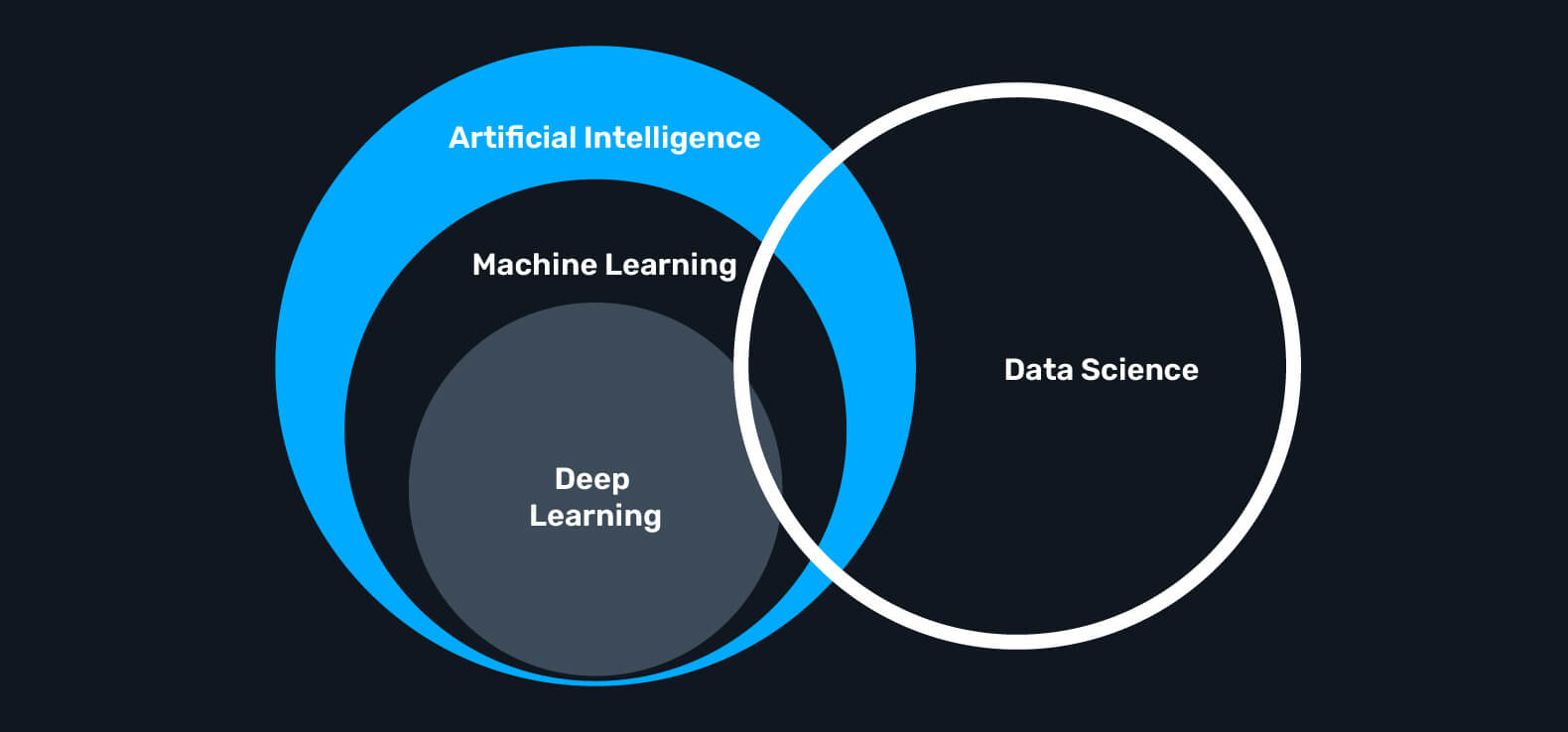
Machine learning is also used to process massive data in real-time to predict users’ needs and behavior.
The Internet of Things (IoT) devices creates many opportunities to gather data and help to make something valuable from it.
10. The Metaverse
We have already covered this topic in the above points, so we are well aware of the "Metaverse".
The Metaverse is a vision of the web and its future interface. It depends heavily on VR and AR to create an integrated and persistent user experience. This will surely be the next big trend for web designing in 2023.
All about Blockchain and its Fundamentals
The name 'Blockchain' itself says that information will be stored in the form of blocks. Every node can see the block, but they can’t alter them.
On an average of 13 seconds, every node in the blockchain network gets the most updated blockchain.
Blockchain Technology Mainly has Five Components as Below-
1 Node -
Node is each device/computer that runs the respective blockchain software to validate and store the complete transaction on the network. There are two types of nodes in blockchain technology- Full Node and Partial Node.
Full Node – It can validate, accept and reject the transactions, and maintains a full copy of all the transactions.
Partial Node – Also called a Lightweight Node because it maintains only the hash value of the transaction. These nodes have low storage and lower computational power, but the entire transaction is accessed using its hash value only.
2 Ledger -
It's a digital database of information. There are three main types of the ledger.
Public Ledger – It is an open and transparent ledger to all. Any user in the blockchain network can read or write something. The best example is bitcoin; which enables anyone to join and contribute to the network.
Distributed Ledger – In this ledger, every node has a local copy of the database. Here, a group of nodes collectively execute the process; verify transactions, and add blocks to the blockchain.
Decentralized Ledger – In this ledger, neither a node nor a group of nodes has a central control. Each node can participate in the execution of the job.
#4 Wallet-
A digital/crypto wallet that allows user to secure their crypto-currency. In the blockchain network, every node has a Wallet. Data privacy of a crypto wallet is maintained by using public and private key pairs. Because the currency in the wallet is universally acceptable, there is no need for currency conversion. Wallets in blockchain are divided into two types –
1. Hot Wallet – These wallets are used for daily online transactions connected to the internet. Hackers can attack this type of crypto-wallet. Hot wallets are categorized into three types as below:
a. Online/ Web wallets: Run on the cloud platform. Eg – MetaMask Wallet, MyEther Wallet.
b. Mobile wallets: Designed to operate on smartphone devices. i.e., mycelium.
c. Software wallets: It consists of desktop wallets and mobile wallets, and the user has full control of the wallet. Desktop wallets can be downloaded on a computer system. Electrum is a good example of a desktop wallet.
2. Cold Wallet – Another type of crypto wallet is the cold wallet. These wallets are very safe because they are not connected to the internet hackers cannot attack them. These wallets are purchased by the user. Example – Paper wallet, hardware wallet. Cold wallets are divided into two types:
a. Paper Wallet: They are offline wallets in the form of a piece of paper that contains the crypto address. The private key is printed in QR code format, and the QR code is scanned for such cryptocurrency transactions.
b. Hardware Wallet: It is a physical electronic device that uses a random number generator; associated with the wallet.
The focus of crypto wallets is on these three things – Privacy, Transactions should be secure, and Easy to use.
Privacy of a wallet is maintained using public and private key pairs. A private key is used to open the encrypted message and to send funds, in this way the Transactions are made secure.
4 Nonce -
A nonce or “number only used once”, is a number added to a hashed/encrypted block.
It's a 32-bit number that is generated randomly for one-time use that assists to create a new block and validating a transaction. It makes the transaction more secure.
5 Hash -
The recorded data is mapped to a fixed size using hashing, it plays a crucial role in cryptography. In a blockchain network hash value of a transaction is the input for another transaction.
Properties of the hash function are - Collision resistance, Hiding, and Puzzle friendliness.
#20 AI-Powered Engagement
At present, we are witnessing that AI is helping to shape every aspect of our life. AI technology has opened many opportunities in almost every sector, such as healthcare, e-commerce, education, banking, gaming, etc. In this way, AI is shaping UI/UX design.
Let us take a look at AI-powered engagement in UX Designing:
- AI Provides User-Friendly Insights: AI technology can help to create a better connection between the user and the brand. It can help to analyze and collect data to design new products that can satisfy customer needs. For more user engagement, AI offers insights into user activity.
- Customer-Centric Design: Customer-centricity is the most important thing for any kind of UX design. AI can help to understand users' needs and help accomplish the design process in fundamental ways such as; quickly analyzing data, dynamic testing, and Hyper-personalization.
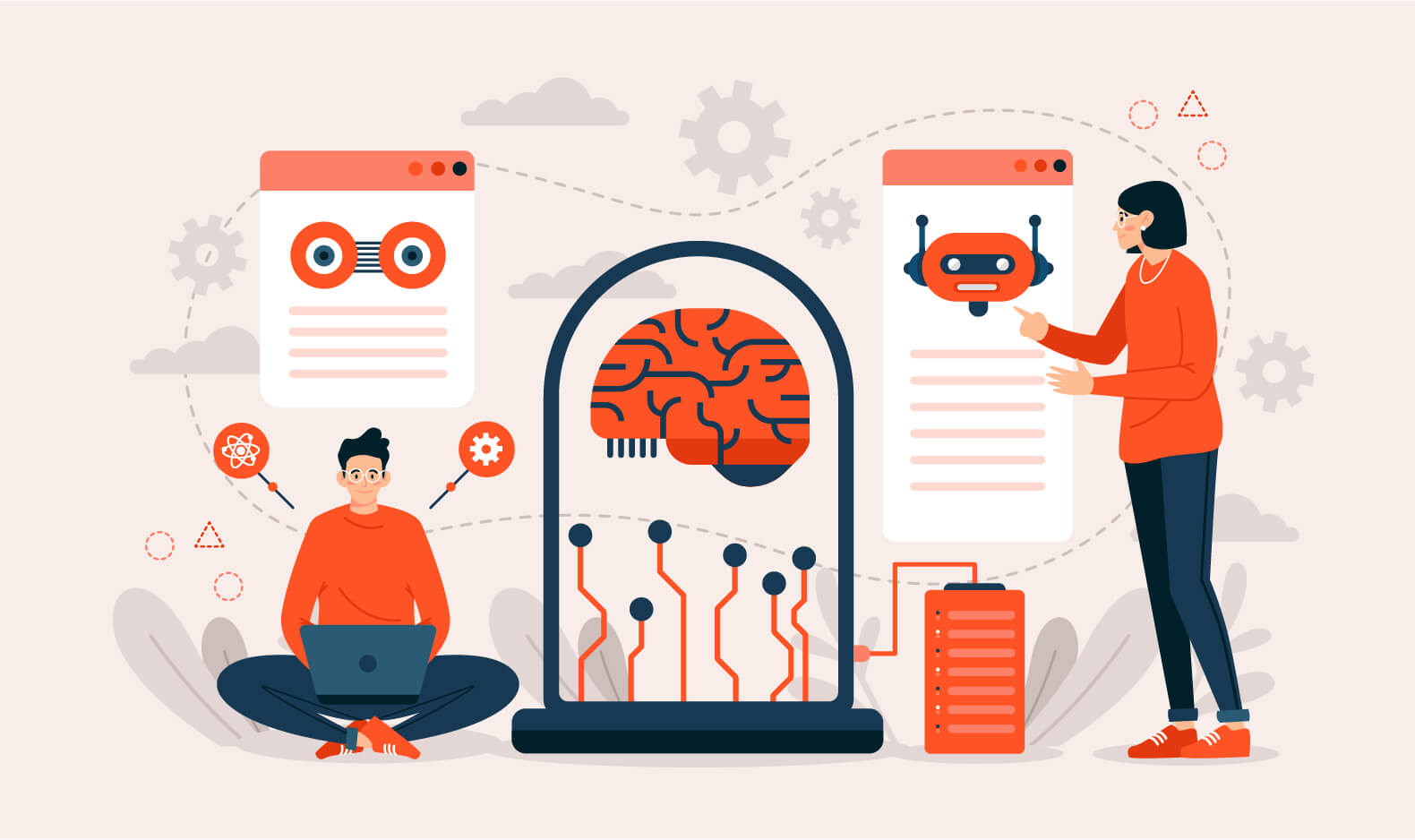
- AI Algorithms Help to Deliver a Better UX: ML & AI provide a next-level relationship between the user and UX design, that can help improve the user experience through automation and intuitive responses.
It also creates multiple designs that can be derived from user behavior. AI-based algorithms can make the process easier.
- AI is used as A New UI: Designers have already started to create designs with AI. Developers are using AI to develop specialized mobile apps.
- AI Tools can Help to Build Another Level of Personalization: AI tools can help UI/UX designers to build customized e-com sites on user data. Therefore it's taking the shopping and marketing experience to another level.
- Quality Design in Less Time: Unlike the traditional method, AI-powered technology helps designers create the latest products with quality in less time.
Therefore for so many reasons, users and designers are moving to ML and AI systems.
#21 Why Seamless User Experience will trend in 2023
There’s no wonder a good UX design provides massive value. Let’s consider some of the added value that good UX design offers.
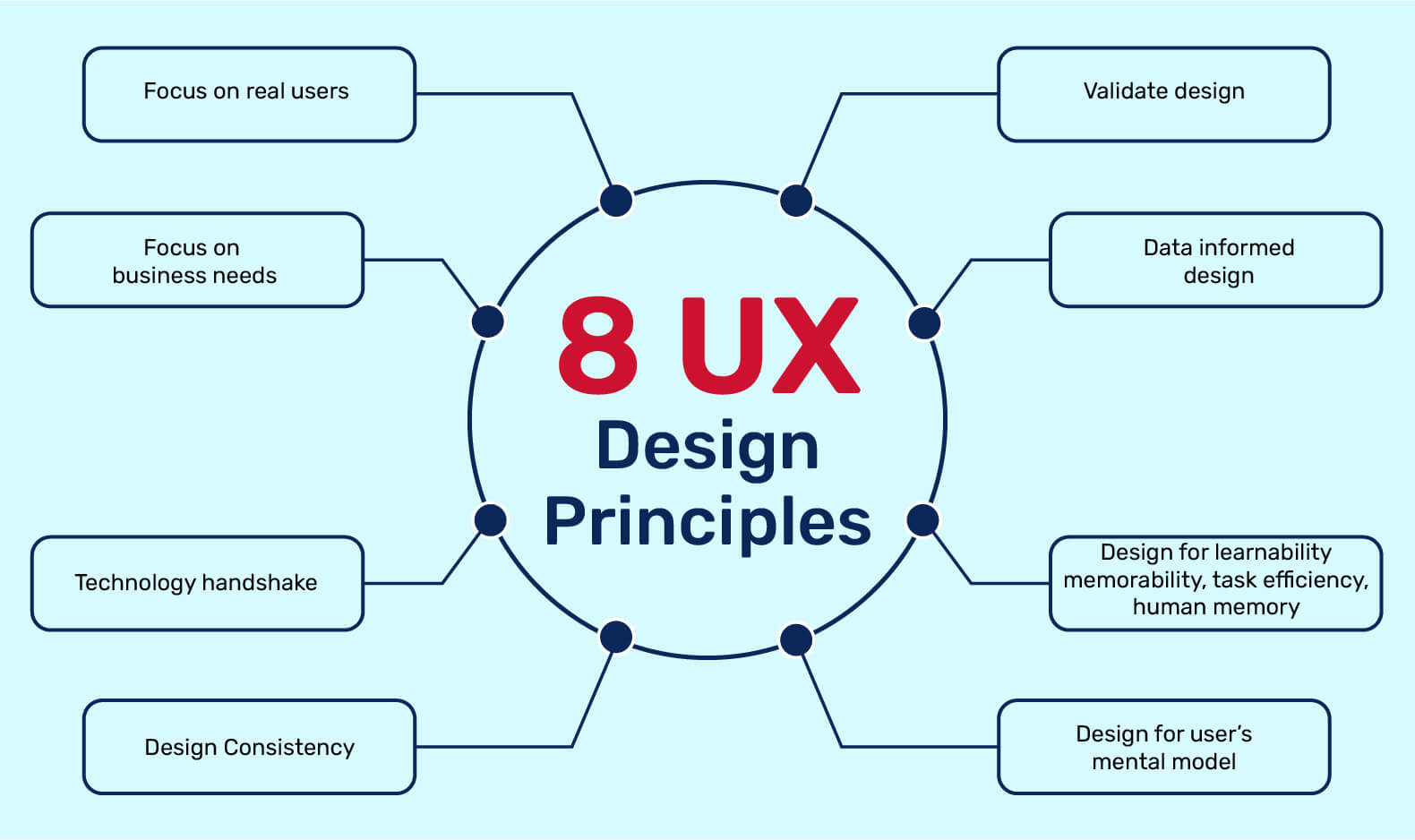
1. Provides an In-Depth Understanding of Users
The discipline of UX design is always customer-centric. UX designers provide such an in-depth understanding of users by creating personalized UI features based on user research.
They not only collect data but interpret it by extrapolating their activities from that data to create user personas that represent the people who use the products.
2. Establishing Brand Value and Memorability
75% of consumers cite brand value as a major factor in their buying decisions.
In a modern digital context, the visuals and interactions responsible for so many user touchpoints adequately demonstrate this.
Hence, promoting strong brand recognition adds huge value to any organization and a brand design maker can have a massive impact on any company's growth.
3. Breaking The Boundaries of Brick-and-Mortar Barriers
In recent decades, businesses have seen a lot of changes and now offer cross-channel user experiences.
Many service providers urge us to use their digital products, and physical stores aim to provide a satisfactory shopping experience.
4. Establishing a Competitive Advantage
The thing that separates a good brand from the crowd is its design.
Today, there are tons of free tools available for building websites or applications, it's like automated tools that can create products with limitations of already live products and put you in a line of the unrecognized crowd.
A product that was designed by a professional designer with great design can help your brand to stand apart from competitors with its unique and custom features.
5. A UX Design-Thinking Discipline is Now Integral for a Successful Business.
The design-thinking culture is one of the most crucial tools in a UX designer's toolkit. New methods by which UX designers think, research, approach, create, and solve many of the biggest challenges are very effective.
5. Design System
A design system is a collection of functional elements, patterns, and components, guided by brand standards that product and designing teams use to create a consistent experience across the product range of a brand.
Design systems act source of singular design language to guide the development of products.
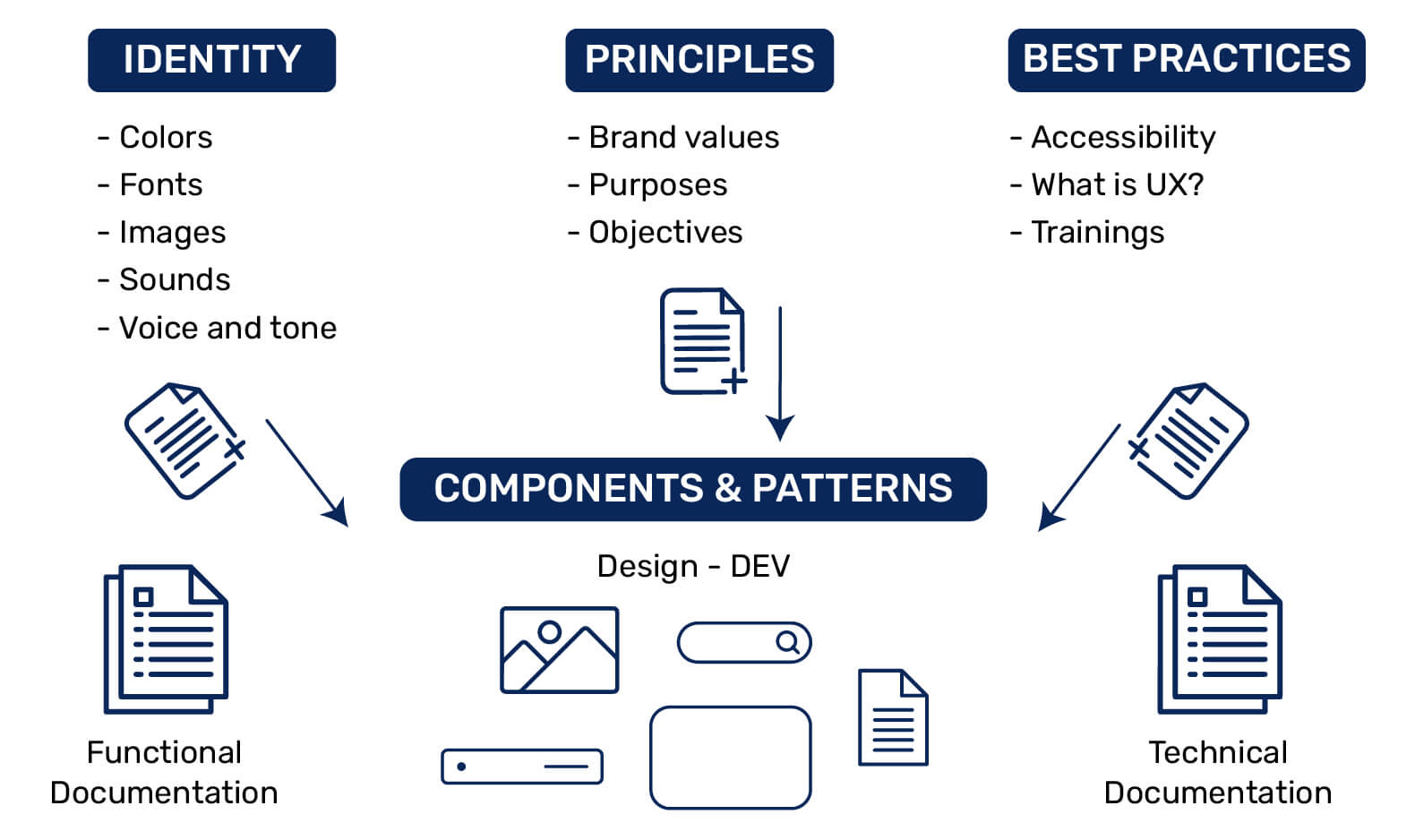
To build a great UX, design teams must understand what they need to build and why they need to build it. That’s why design vision and design principles should always be used as a foundation for design systems.
A design vision acts as a North Star for designers, communicating to product teams the global purpose of their designs. It guides product teams by helping them reach the ultimate purpose or goal of the product.
Material is an adaptable system of components, tools, and guidelines that support the best practices of UI and UX design.
Well-defined design systems provide freedom to product teams to experiment and try different creative approaches to solve problems.
Design systems should be flexible and responsive in order to make any changes in the field of design.
Elements of a Design System
A design system consists of both tangible and intangible elements, i.e. components, patterns, and style guides are tangible elements, while guidelines, brand values, and design mindset are intangible elements.
These tangible and intangible elements work together, to direct product teams and help them make meaningful design decisions.
Design systems vary depending on the need of an organization, but all well-functioning design systems share a similar approach: Easy adoption.
A well-functioning design system fits easily into the existing culture of your team, and the design process.
All components of the design system should be consistent, flexible, documented, and naturally work together.
Successful design systems are an integral part of an organization’s makeover, but incorporating them takes time.
Setting up clear standards for the product team and enforcing them through strong communication, vision, documentation, and ongoing encouragement; can help create a consistent experience among a range of products.
Wrapping Up
Predicting the future of design is a difficult and tricky job. Some trends may burst from a suspicious position to light up the sky but then soon fade away.
While some trends start in slow and bright flashes every day until they completely influence our daily design decisions.
Currently, Artificial Intelligence has more power to shape new UI & UX designs. Many AI solutions are appearing as a hurdle, which makes it problematic to analyze how UX designs will change in the future.
Nevertheless, we know that AI and ML technology can not replace creative designers for UX designing. Because humans have more interesting and unique abilities to set the design foundation and create emotional responses for users.
UX designs can direct execute to business growth.
Since the digital revolution has tied all aspects of our world together. Different experiences; from human to digital, and from physical to virtual, UX designs flow together to deliver a satisfactory consumer experience.
It's now clear that the next big trends for UI/UX design in 2023 will be based on AI & ML, Web3.0, smart devices, and others.

